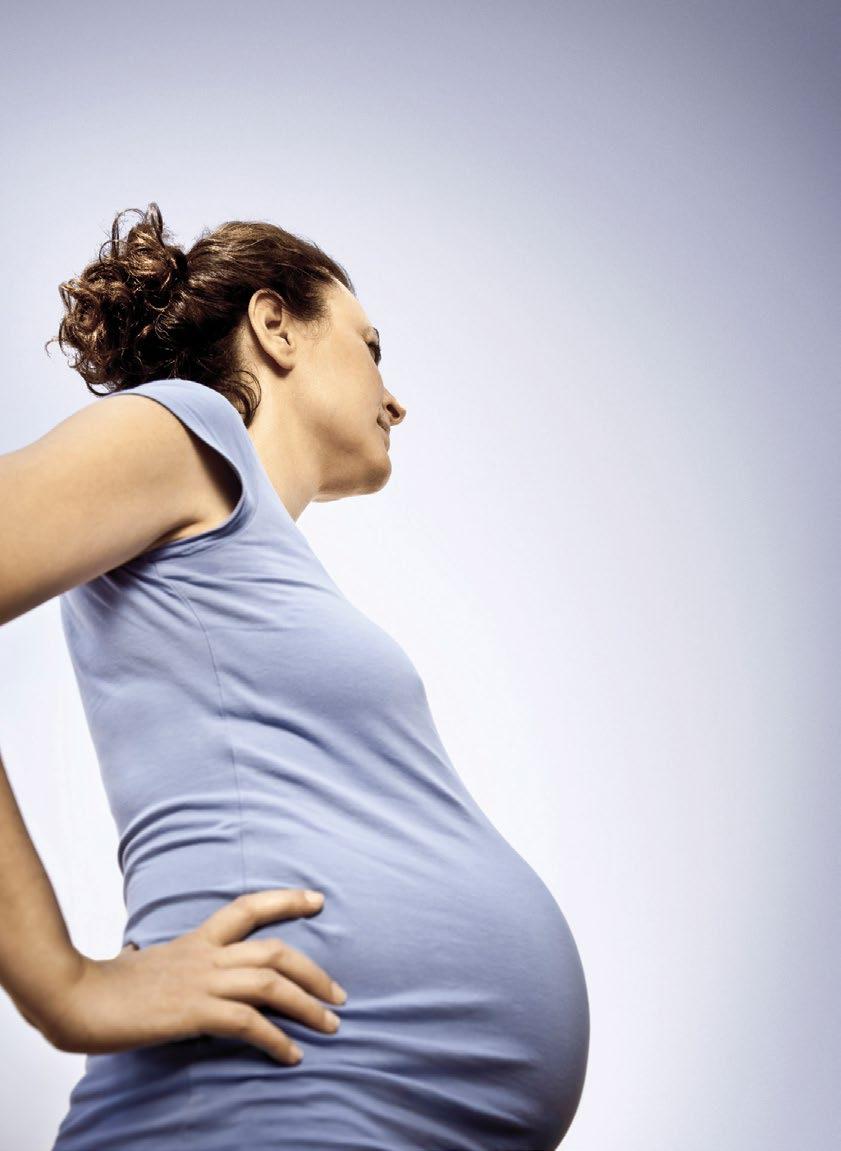








That’s why Starlight exists. Captain Starlight helped Henry smile through an entire year of cancer treatment, bringing him the fun and laughter he needed to cope with life in hospital.
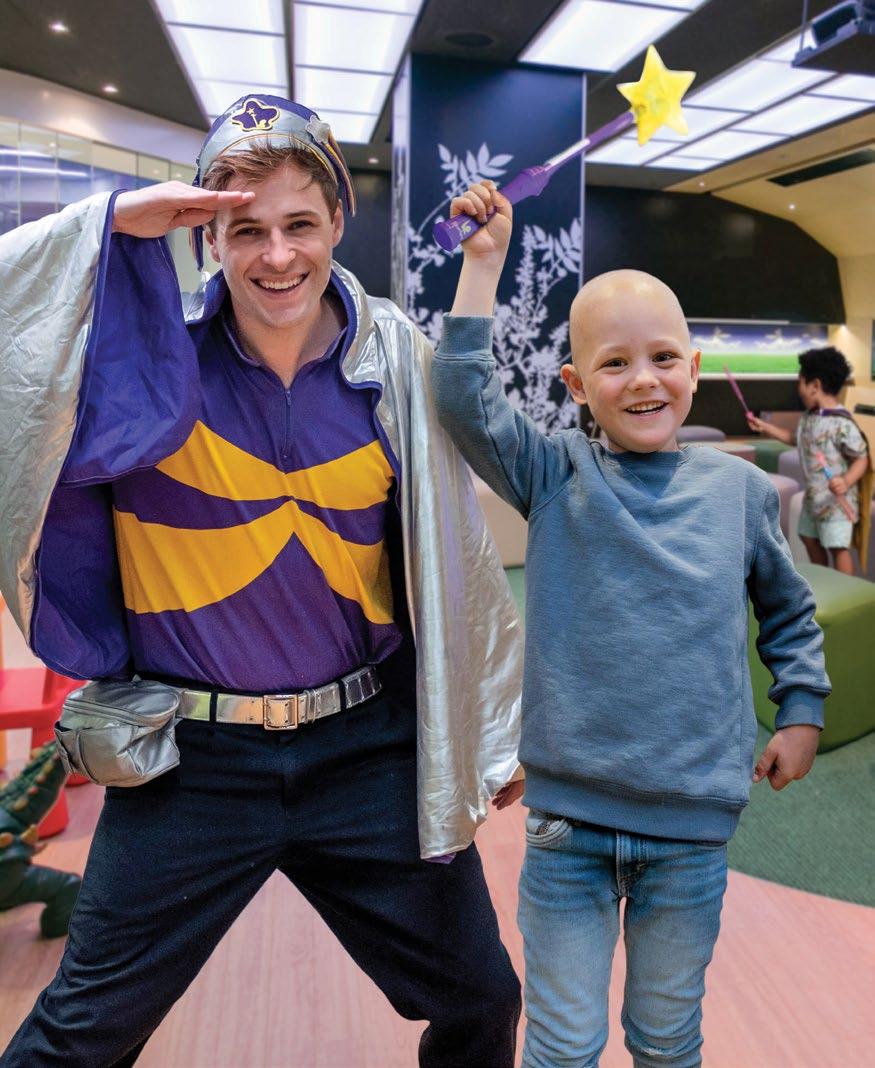
Donate at starlight.org.au
Happiness Matters.
Summer loving, had me a blast, Summer loving, happened so fast. Summer is my favourite time of the year and we are certainly getting down to the pointy end of 2022. Life is getting busy, busy. Christmas events, school speech night (snore), my daughter’s grade six graduation (how is my baby that old?), Christmas present shopping (largely thanks to black friday sales #winning), mum's nights, throw in the Brisbane PBC Expo, a movie here and there and the MamaMag team have been having an absolute ball!
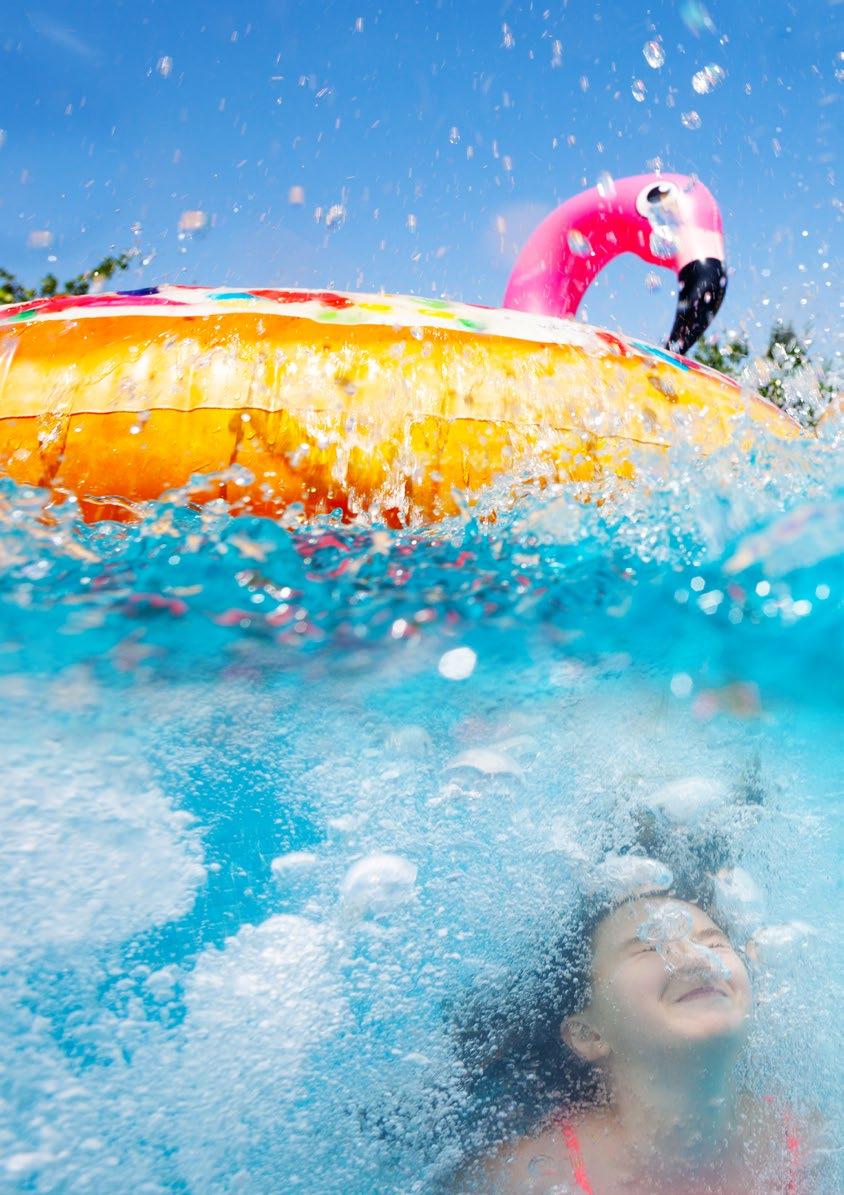
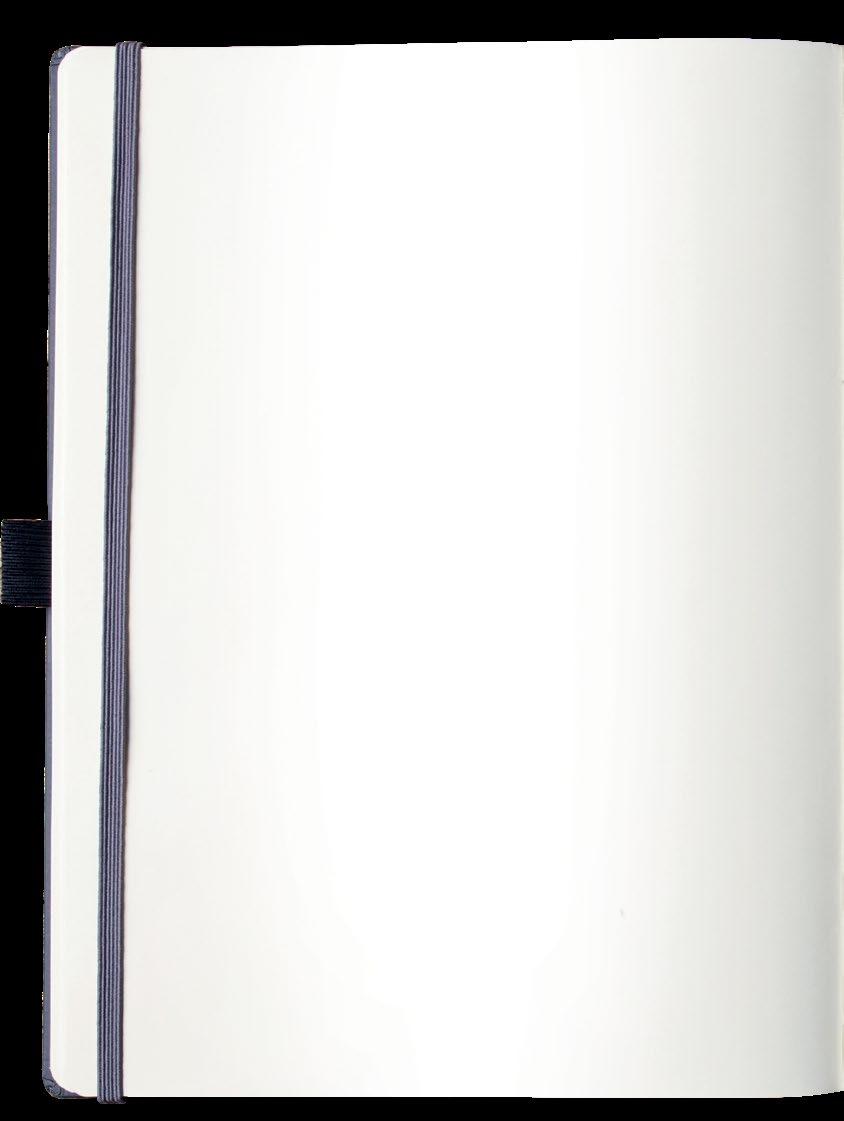
So what have you got planned for Christmas? This mama is taking it pretty slow. No grand plans for major holidays, just a few outings exploring our city, get the kids in the kitchen to try out some fun new Summer dishes. We've been creating some fun drinks with our new SodaStream. It's the perfect way to try and drop the alcohol intake, or compliment it, depending on what I'm feeling like! Make sure you enter our giveaway to win one yourself to top off your Summer!
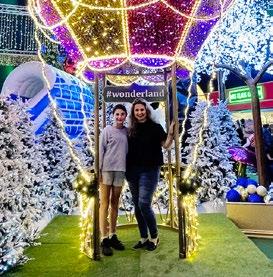
But what ever you're doing this Christmas, stop and take it all in. Enjoy the memories of the Summer holidays and make sure you take some family photos (I mean with you in it, ok!) even if they are just a few selfies. Childhood doesn't last forever, as Miss 12 keeps reminding me, snuggle up to those kids while they still let you!
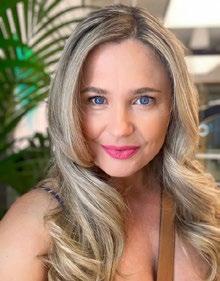
MamaMag is designed and published free online every two months for Brisbane mums, families and carers.

Publisher: Mama Creative Group Pty Ltd. ABN: 26 042 138 550. PO Box 8018, North Road LPO, Brighton East VIC 3187 Phone: 1300 771 446 Email: info@mamamag.com.au www.mamamag.com.au | www.mamacreative.com.au
Editor in Chief/Creative Director: Sarah Cavalier: sarah@mamamag.com.au
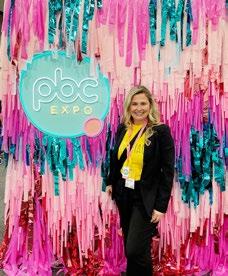
For advertising enquiries contact: Olivia Wilson: olivia@mamamag.com.au Want to write for us or have an article idea? submissions@mamamag.com.au
MamaMag give thanks to our Supporting Partners.
Support and fun for the Brisbane mum Sarah Cavalier Editor - MamaMag - @thecavaliermamaRebel Mama
Rebel Wilson's journey into motherhood Christmas in Brisbane
Festive fun around town Barefoot kids
Scott Pape is helping our kids Tinted SPF
This season's time saving musts BMX bandits
Starlight kids pick their top toys The Santa talk
Your Santa agent invitation Subscribe to MamaMag
Get the fun straight to your inbox First Nations food
Summer cooking with a twist Pool tricks
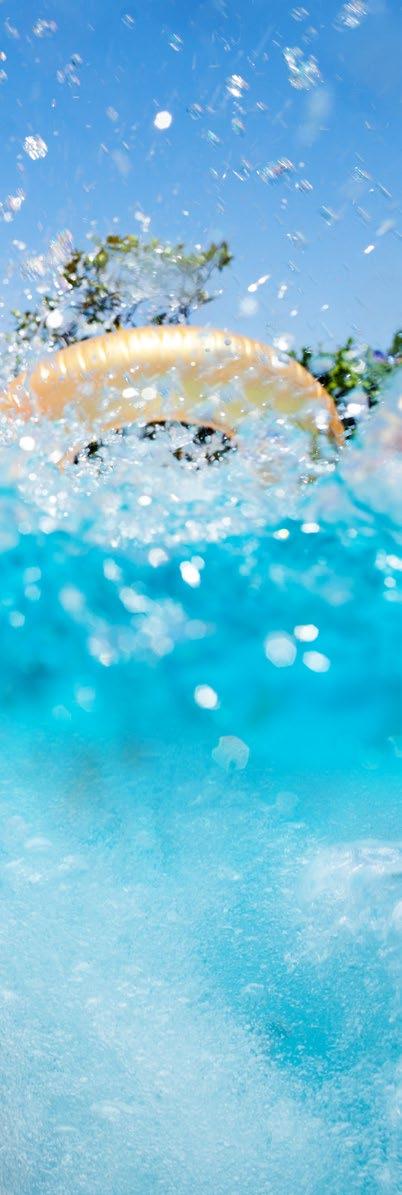
Libby Trickett's ideas to enjoy the pool That's a bit cheesy
Make the cheese board your best friend New on the shelf
Out top new book picks this month Aussie backyard how-to's
Ideas from The Block's Kirsty and Jesse Separation success
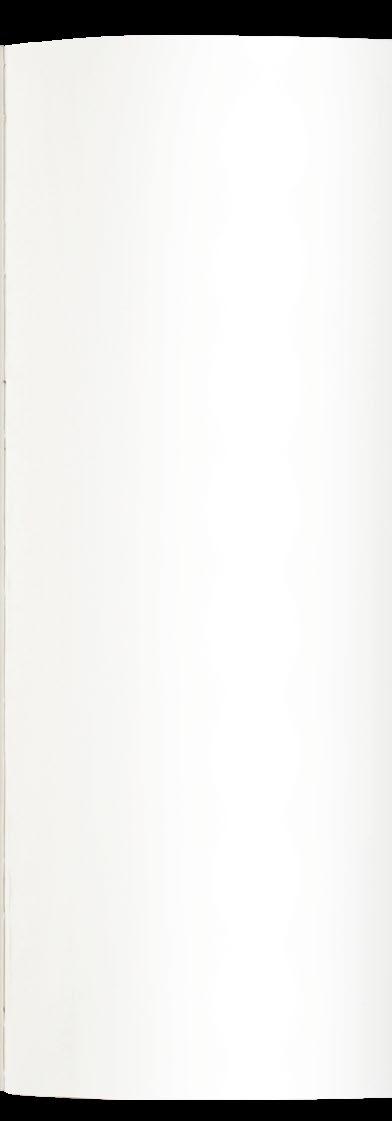
The NEW SodaStream Art Sparkling Water Maker celebrates the art of making your own fresh sparkling beverages at home. The Art features a slim retro design, stainless-steel trim and a unique lever that elevates the everyday water experience!
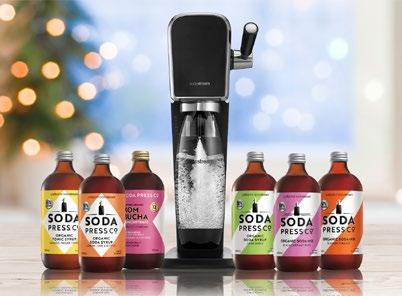
Fijifilm instax mini 11 photos kits Teen self harm
How serious is it? Be wary of baby wearing
Potential risks to avoid
The opinions expressed herein MamaMag are not necessarily those of the publishing staff. Reproduction in whole or part is prohibited without permission of Mama Creative Group. Health related articles are designed to be informative and educational. They are not intended to provide specific medical advice or replace one-on-one advice from your health practitioner. Some articles contain affiliate links for which MamaMag may be paid a commission when readers shop these links. Shopping affiliate links makes no difference to the price you pay but helps fund MamaMag allowing us to provide our family-friendly resource to you for free.
Everyone’s journey to motherhood is different, and not everybody’s is easy. Everyone’s journey once becoming a new mother is also different. Parenthood is challenging enough without worrying if the world is going to judge you for your decisions.
Whilst Rebel Wilson might be smiling here, at the Academy Awards on October 15, our fave new Aussie mama, who announced the arrival of her baby girl Royce on November 8 via surrogate, was quickly shamed for attending a friend’s party soon her daughter was born. Rebel had been a parent for less than a month and she was already being mum-shamed after posting a since deleted video of herself having a good time. For all we know, Rebel only popped out for an hour to celebrate her friend because, while parenthood is undoubtedly important, so is maintaining relationships and your own mental health. Whether she stayed for an hour or longer is none of our business and she is the one who knows her baby and what’s going on at home.
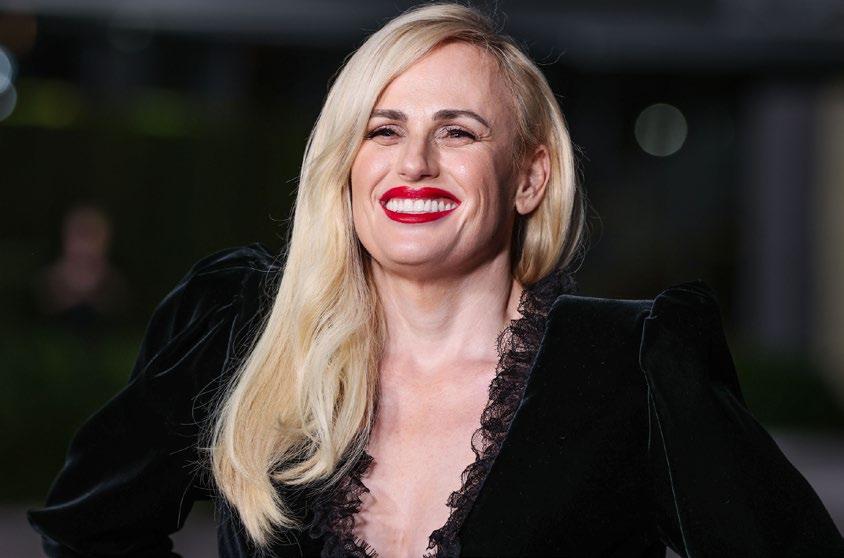
Whilst motherhood might be hard now, Rebel’s journey to motherhood was far from easy either. Her baby was years in the making and Rebel has opened up about her 'devastating' journey to becoming a mum.
It was an Instagram post in 2020 of her exercising on the beach, that she captioned with the words ‘year of health’, that gave us what we now know was the first hint she was trying to become a mum.
Busy with a hugely successful acting career, Rebel hadn’t started thinking about the possibility of having children until she was 39 and that’s when she looked into potentially harvesting and freezing her eggs.
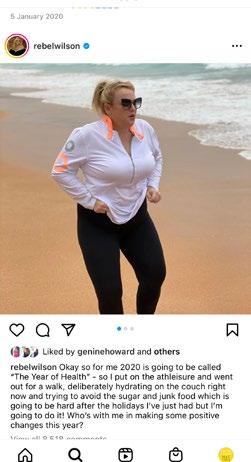
With her fertility already complicated by polycystic ovarian syndrome (PCOS), she knew she had her work cut out for her and has described her journey as an “emotional rollercoaster”
“I went to do a fertility specialist who looked me up and down and said, ‘You’d do much better if you were healthier’. After hearing those harsh words I decided to re-assess my health and it was my future child’s needs that really inspired me to get healthier.”
Working with a trainer, Rebel went on to lose 37kg. And it goes without saying that nutrition played a major role in her transformation. Eating had been a real factor in her life and so she dedicated time to deal with “the emotional issues”.
However is was during the filming of her new dramatic film The Almond and the Seahorse that she received the next devastating hurdle in her quest to become a mother.
“During the filming I received some terrible news that all my harvested eggs up until that point had not survived being thawed. I'd lost a huge amount of weight and been through three surgeries at that point and I had no viable embryos. It was devastating."
But her desire to become a mother was so strong, she knew she couldn't give up, so Rebel chose the path of surrogacy as her next step so we were thrilled when she announced the arrival of her baby girl Royce last month.
"I can't even describe the love I have for her, she's a beautiful miracle! I am forever grateful to everyone who has been involved, (you know who you are), this has been years in the making… but particularly wanted to thank my gorgeous surrogate who carried her and birthed her with such grace and care,"
"Thank you for helping me start my own family, it's an amazing gift. The BEST gift!!I am ready to give little Roycie all the love imaginable. I am learning quickly… much respect to all the Mums out there! Proud to be in your club."
Sharing a clip of herself assembling a baby swing for the newborn on Instagram, the Aussie actress said she was 'crushing mumhood', having managed to assemble the device on her own!
"One week of motherhood is done, it's been a total life change. I'm not looking my most glamorous and I've been learning how to change diapers, how to feed the baby and I'm so lucky I have amazing help in my amazing partner Ramona.”
"Thank you for all the love for baby Roycie, she's doing amazing. She's a tiny little thing but is doing amazing and is healthy and awesome and such a chilled baby, actually. It's been really cool to get to know her."

People turn to surrogacy as a means to have a family for a variety of reasons. Some may be heterosexual women who are unable to carry a pregnancy safely or who have had a hysterectomy; some may be a single or partnered gay man.
Additionally, as adoption within Australian society is becoming more restrictive and progressively unavailable, couples and single people may wish to avoid the process or domestic or international adoption. Adoption in Australia, with the exceptions of certain states, is currently not an option available to gay male couples.
Gestational surrogacy is when the surrogate has a fertilised embryo transferred into her. The embryo is the product of in vitro fertilisation (IVF) using the sperm and egg of the intended parents, however gay men and single people can also use donated eggs or sperm. A gestational surrogate has no genetic contribution to the child they are carrying. Gestational surrogacy is the most common type of surrogacy arrangements in Australia.
Traditional surrogacy is when the surrogate provides the egg herself, so she does provide a genetic contribution to the child she is carrying, which is fertilised with the sperm of the intended father, usually through artificial insemination.
Surrogacy in Australia is regulated in each state, which means there are no uniform laws that cover surrogacy across the country. However in Queensland both gestational and traditional surrogacy arrangements are permitted. You must be at least 25 years old to be both the parent and the surrogate.
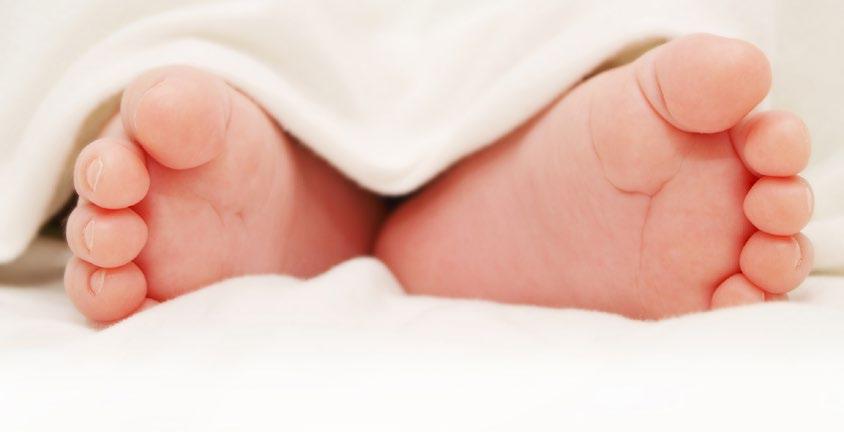
At birth, the surrogate is recognised as the birth mother of the child, and if she has a husband or partner they are recognised as the child’s other parent. Intended parents can apply to the Supreme Court for a Parentage Order no earlier than 28 days after birth, and no later than six months following birth.
For more state specific rules in Queensland visit: https://www.surrogacyaustralia.org/ australian-surrogacy-legislation/victoria/
Laws in all states follow the same basic principles:
• The intended parents must not be able to either conceive or carry a baby themselves.
• The surrogacy arrangement is not enforceable. This means that if the surrogate does not relinquish the baby, or the intended parents do not accept the baby, neither party can enforce the agreement. However, the surrogate can enforce the agreement to recover prescribed costs.
• The surrogacy arrangement must be altruistic. Commercial surrogacy is illegal in all states in Australia. This means the surrogate and her partner cannot be paid for carrying a baby for someone else.
• Whilst surrogacy is altruistic, the intended parents must cover the surrogate’s expenses in relation to surrogacy, pregnancy and birth.
• When the baby is born, the birth is registered in the state where the baby is born, with the surrogate and her partner listed as the baby’s parents on the Birth Certificate. After the birth, the Intended Parents can apply to the Court for a Parentage Order in the state where they live. The Order transfers parentage from the birth parents (the surrogate and her partner) to the intended parents. The Birth Certificate is then reissued with the new parents listed, instead of the surrogate and her partner.
If you are not comfortable with the support requirements, laws or effort required of Australian surrogacy, there may be legal overseas surrogacy options which can assist. Countries such as the US, Canada, Greece, Ukraine, Georgia & Russia all provide legal parentage to foreigners who are eligible for their programs. Eligibility and costs differ from country to country.
Parenthood is challenging enough without worrying if the world is going to judge you for your decisions. Parents should be allowed to do what instinctively feels right, and that’s not going to be the same for any two families.
Rebel will be experiencing many firsts right now. Let’s hope this is her first and last run in with the judgemental parent police and she gets to enjoy every minute of being a new mum.
If you'd like more information on surrogacy visit https://www.surrogacyaustralia.org/
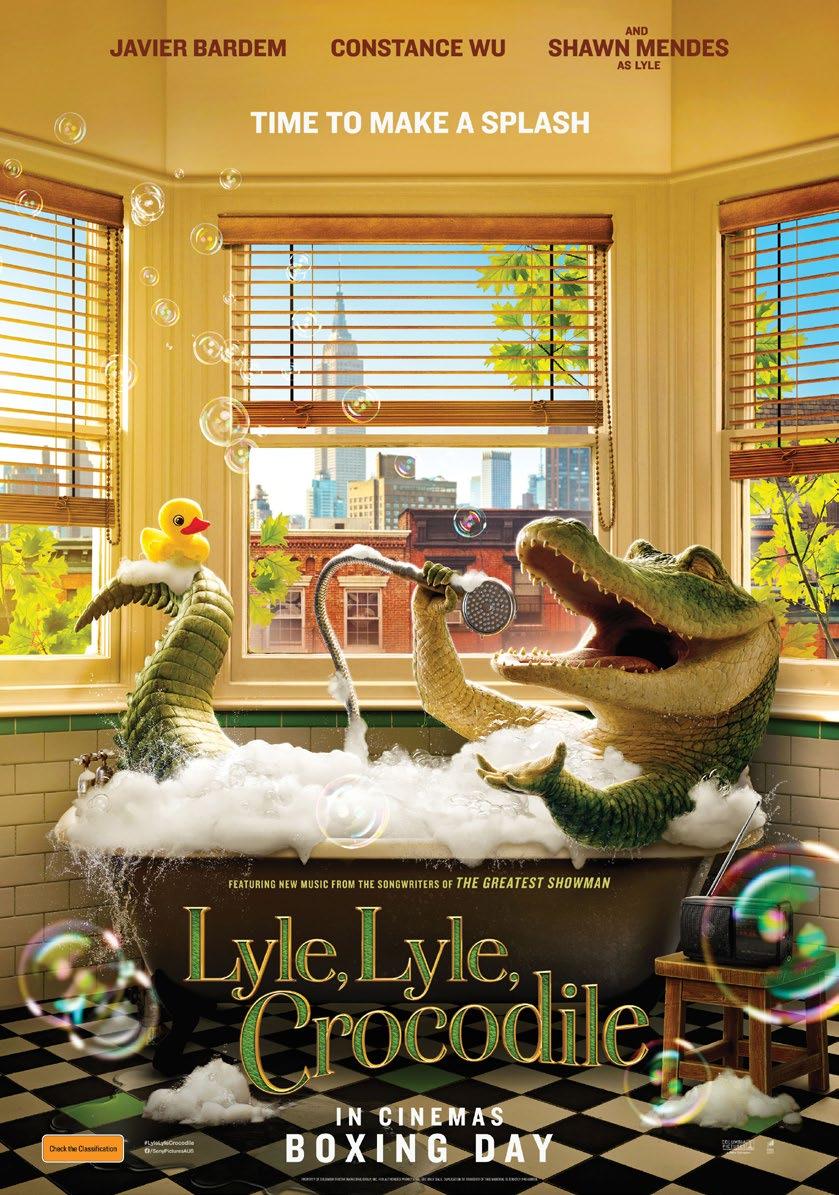
PRESENTED BY THE LOTT BY GOLDEN CASKET
Lord Mayor Adrian Schrinner will turn on the 22m-high Christmas tree’s twinkling lights accompanied by special Christmas musical performances to get you in the festive mood.
FREE KING GEORGE SQUARE
25 November 6.30pm – 7.15pm
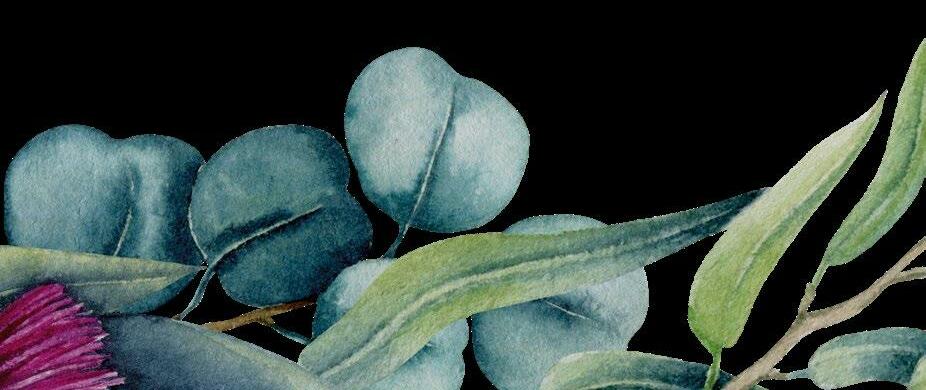

Be amazed by the magic of Christmas at The Lott by Golden Casket City Hall Lights as Brisbane’s iconic City Hall is immersed in a vibrant visual lighting and audio display that can’t be missed.
FREE KING GEORGE SQUARE
9 – 24 December 7.30pm – midnight Occurs every 15 mins

This festive season, take a moment between Christmas shopping and catch-ups to enjoy some joyful live entertainment in Queen Street Mall!
FREE QUEEN STREET MALL
9 – 24 December 11:00am – 3:00pm daily 4:30pm – 8:30pm during late night trade
Enjoy live daily performances by a local jazz quartet, Scat, taking residency at the Queen Street Mall Stage.
FREE QUEEN STREET MALL STAGE (OUTSIDE THE MYER CENTRE)
9 – 24 December 12.00pm – 2.30pm daily 5.00pm – 7.30pm during late night trade
Enjoy cherished Christmas carols and festive favourites performed live by Brisbane’s best entertainers when they take to the Riverstage on Saturday December 10 from 4pm.
Tickets are on sale 9am Monday 21 November via Ticketmaster for $5 and free for under 18.
TICKETS
$ 5 RIVERSTAGE 10 December
Gates open at 4pm, show starts at 6pm
It’s beginning to look a lot like Christmas when Brisbane City’s iconic Christmas Tree emerges in King George Square.
FREE KING GEORGE SQUARE From 25 November
Brisbane Arcade’s Christmas Market is back for the third year with their designers, makers and creators spilling out onto Queen Street Mall for a festive marketplace.
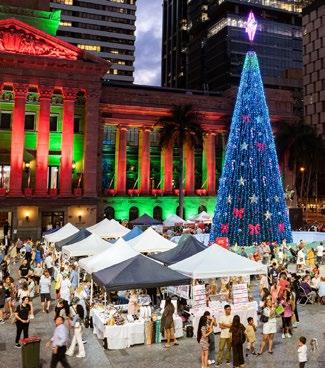
FREE QUEEN STREET MALL 2–3 December 10am – 7pm | 10am – 4pm
CHRISTMAS MARKETS - BRISSTYLE
Head to King George Square to experience the one and only BrisStyle Twilight Markets, selling local handmade goods, featuring over 60 local designers.
FREE KING GEORGE SQUARE

2 December 4pm – 9pm


ELFIES! is an all-singing, all-dancing, all-ages spectacle that gives audiences a side-splitting glimpse into what really happens at the North Pole.
TICKETS FROM $ 6
Tickets start at only $6 per person with free entry for children aged two and under, discounts for families and reserved tables for groups of four or six. Tickets are on sale from Thursday 10 November.
SOUTH BANK PIAZZA 17 – 22 December 5:30pm & 7:00pm – 45-minute show
Whatever your tipple of choice, raise a toast to the silly season at Tinsel Tavern Bar presented by eatSouthBank. Order a refreshing drink and soak up the sounds of Festive Beats, a line-up of live and local musicians serenading visitors nightly.
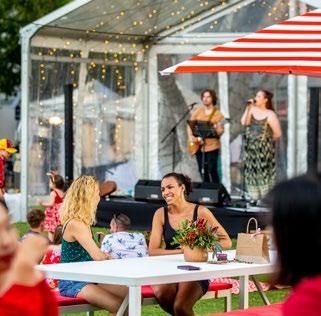


LITTLE STANLEY STREET LAWNS – SOUTH 17 – 22 December 4:30 – 10:00pm
PRESENTED BY EATSOUTHBANK
Christmas Cinema returns to River Quay with free screenings of festive flicks at 6pm and 8pm in the spectacular open-air cinema.
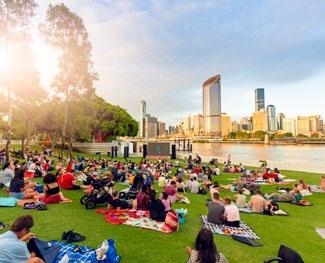
FREE RIVER QUAY


17 – 22 December 6:00pm & 8:00pm
Take a selfie with the man of the moment at Santa’s Stopover, a free photo station at Flowstate Pavilion.
FREE FLOWSTATE PAVILLION
17 – 22 December 4:00 – 9:30pm
Fun and free kids activities turn Little Stanley Street Lawn into a Yuletide playground from 4pm to 8pm every evening.

FREE LITTLE STANLEY STREET LAWNS – NORTH
17 – 22 December 4:00 – 8:00pm
PRESENTED BY EATSOUTHBANK
The Collective Markets along Little Stanley Street get a holly, jolly makeover with stallholders offering a veritable Santa’s Workshop of gifting delights from 10am until 9pm daily.
FREE LITTLE STANLEY STREET
17 – 22 December 4:00 – 8:00pm
There's no doubt, when kids become adults they are tested on money skills every single day of their lives. Yet most of us had to learn these skills the hard way, because we were never taught them in school.
In 2016 I wrote a book called The Barefoot Investor which went on to become a bestseller. And the number one question people asked me after I wrote it was:

After years of research, Barefoot Investor Scott Pape (whose books for adults and families have sold millions of copies and counting) has now written a guidebook you can hand straight to your primary-school-aged kids to help them start their financial journey through life the right way!
It's time for your kids to roll up their sleeves, get their hands dirty, and learn the value of a buck the old-fashioned way.
We chat to Scott about this new book, his inspiration behind it and why kids shouldn't be paid to unload the dishwasher!

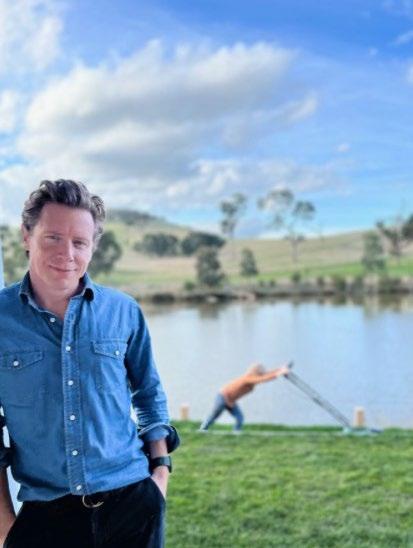
So, I set out to answer that question.
It took me on a two-year journey heading into private schools, public schools and remote schools, talking to students, teachers, parents and politicians. And what I learned was… we need to do better… a LOT better.What we’re currently doing isn’t working. Too many kids graduate at the bottom of the financial class, into a lifetime of debt, with little understanding of the contracts they’re signing. We need a financial revolution in this country, and it needs to start with our kids...
Your new book Barefoot Kids takes all of the guesswork out of teaching kids how to be financially savvy. What inspired you to write it?
I’ve spent years trying to get financial education taught as a compulsory subject in schools. However, for all my efforts, I basically failed. Still, I passionately believe that learning about money is the one exam that every kid will be tested on every day of their lives. It’s a core life skill we all need to know.
So, I wrote this book as a way of bouncing over the educational bureaucrats – by putting it into the hands of kids across Australia. The kids that are in the book are totally inspiring as well; they’re absolute champions. Each of them is having their own EPIC money adventure.
“Why didn’t I get taught this stuff at school?”
‘Giving back’ features prominently in this book as in your others. Why is it such an important value for you and what do you think it brings to managing your money wisely?
It’s pretty simple: the happiest people you meet are the givers.
The biggest fear most parents have (including me!) is that our kids will grow up to be entitled brats. If you were born in Australia, you’re already part of the 1 per cent.
Giving gives everyone (including kids) perspective on how good they’ve got it. It also builds empathy and gratitude.
That’s why I say in the book ‘kindness is a superpower’ – because it absolutely is.
What is the best thing parents can do for their children financially?
Give them my book! So, I know that sounds totally obnoxious, but hear me out: Every parent has tried to talk to their kid about money. Every parent has done pocket money. Every parent has seen it fizzle out, and then resorted to nagging, scolding, and bribing.
My book is kind of unique: it talks directly to kids and invites them to roll up their sleeves and go on an EPIC money adventure where they call the shots.
The parents are always in control – they always have the final say – however, the book does all the hard work and answers all the tricky questions.
The overwhelming feedback I get from parents is they are so damned proud of what their kids have achieved after they make it through all the Barefoot Steps.
The book features inspiring stories of children who are more financially savvy than most parents. What are some of the biggest takeaways you learnt from these children?
1. The biggest one is just how much FUN these kids are having.
Their enthusiasm is totally infectious. Parents tell me they get swept up in it too, because they see how much fun their kids are having. Contrast this to the nagging most parents do about chores.
2. It builds confidence like nothing else. The Barefoot Kids tell me they feel older and more confident because they’re actually proving to themselves how smart they are.
3. It’s a myth that kids don’t like working, or learning, or getting outside and doing stuff. These kids come up with their own ideas. It not only builds their creativity, but also their resilience when things don’t go to plan.
4. Kids will find a way.
When I was growing up, working out how to do something was often difficult. These days, kids simply go on YouTube to quickly work out how to do most things. They’re very good at finding solutions, and they come up with ideas I’d never think of.
5. They don’t have the same hang ups as adults.
Kids are blank slates when it comes to money. The concrete hasn’t set on their behaviours, so they have the ability to build their confidence and wealthy habits from the get-go. That’s probably the thing that excites me more than anything.
Why do you think parents shouldn't pay their kids to do the dishes?
Because you don’t want to raise a kid who sees everything as a financial transaction. Here’s how I explain it in the book:
Kids, I want you to imagine for a second that you’re really hungry. ‘What’s for dinner tonight, Mum?’ you ask.
‘You’re in luck, we’re having your favourite … spag bol!’ she replies.
She places the steamy, saucy plate down in front of you. Just as you’re about to dive in, she sticks out her hand and says: ‘That’ll be $22, thanks!’
‘YOU CAN’T BE SERIOUS!’ you scream. Okay, can you imagine if your mum did this? She wouldn’t of course—partly because she gets worried when you’re hangry but mostly because she loves you and this is what families do: they pitch in and help each other. This is the same reason you should not expect to be paid for absolutely everything you do around the house. In fact, if your parents are going to pay you some pocket money to
do your jobs, you really should also do some things just to help out. Like what? Like making your bed each morning, like clearing your plate after every meal (including spag bol), like putting your clothes (including your stinky socks) in the laundry basket.
My top three 'Parent Pleasers' are: 1. I will make my bed every morning; 2. I will clear my dishes after every meal and 3. I will put my clothes in the laundry basket when I take them off
Now let me tell you three reasons you should do these three quick, simple Parent Pleasers:
First, I guarantee you that within a week you’ll just do them automatically. It won’t take any effort. Second, if you do these three things, your parents will nag you way less.
Third, and most importantly, your parents are going to notice when you start doing the Parent Pleasers, and be really proud of you. Trust me, this will help sweeten the deal when you start asking to be paid for other jobs.
Scott, your book breaks saving into Saving, Spending and Giving. Tell us a bit more about that.
You may remember in The Barefoot Investor: The Only Money Guide You’ll Ever Need, I introduced the concept of three money buckets. It’s fair to say it changed the way millions of people managed their money (in fact, some banks even ripped off the idea!). With Barefoot Kids, each money bucket teaches a money behaviour: There’s something life-changing that comes from saving up for a goal. It’s great to be a savvy spender (after all, no one likes being around a total tightwad). It’s awesome to give and help people (the happiest people in life are those who give).
Explain why you think Australia needs a finan cial revolution and why it needs to start with our kids?
Whether we like it or not, money colours our entire life. The fact that we don’t teach kids the basics, means many kids end up repeating the same mistakes their parents made. We’re the richest nation on earth, according to the latest wealth report from Credit Suisse. However, we also have some of the highest levels of household debts in the world. We are the lucky country, but for how much longer?
Scott Pape lives with his wife, Liz, and their four kids on their family farm in country Victoria. His brand new kids’ book, Barefoot Kids, is breaking records everywhere!

Written in a unique visual format, Barefoot Kids features 45 inspiring money stories from Australian children, fun projects, rewards and real-life stickers. Kids will roll up their sleeves, get their hands dirty, and learn the value of a buck the old-fashioned way. Barefoot Kids, RRP $29.99 is available online and in all good bookstores.
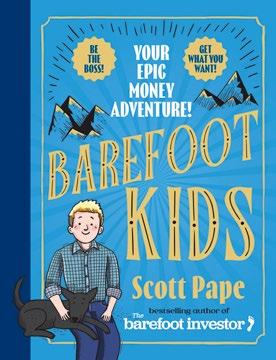
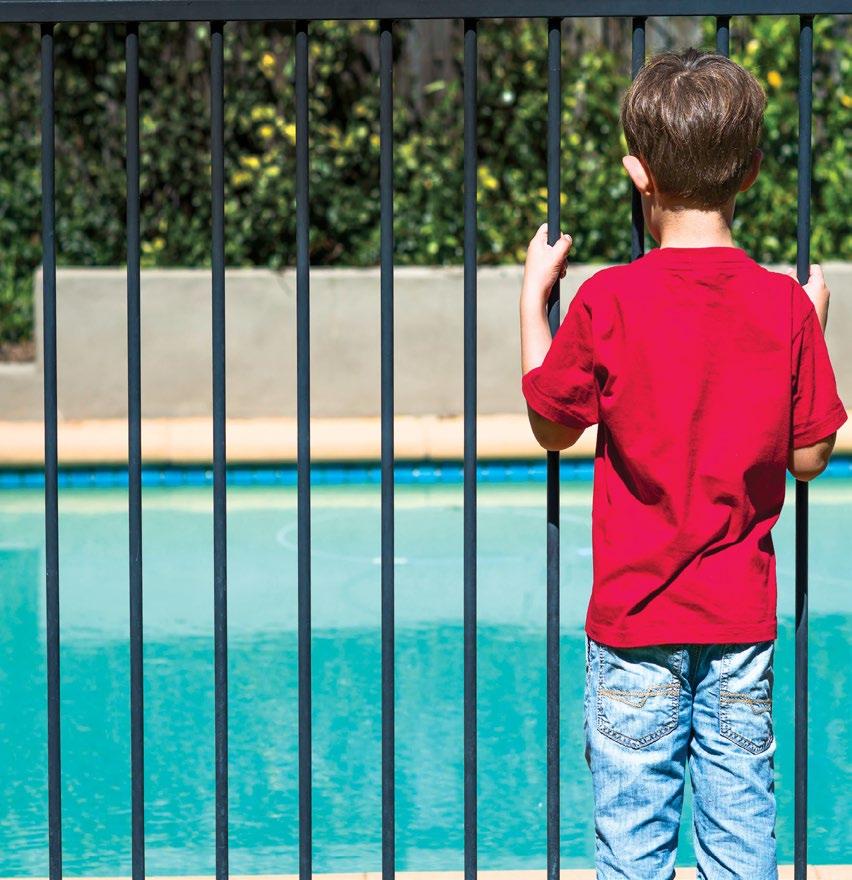

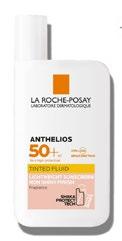


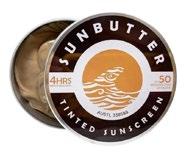
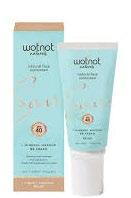
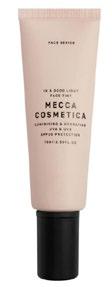
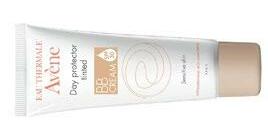
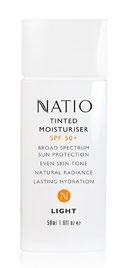
Keen to learn BMX tricks and tips from the best? Brisbane City Council are running a full day of free BMX skills workshops with special guests, Australian Olympian Natalya Diehm and BMX champions.
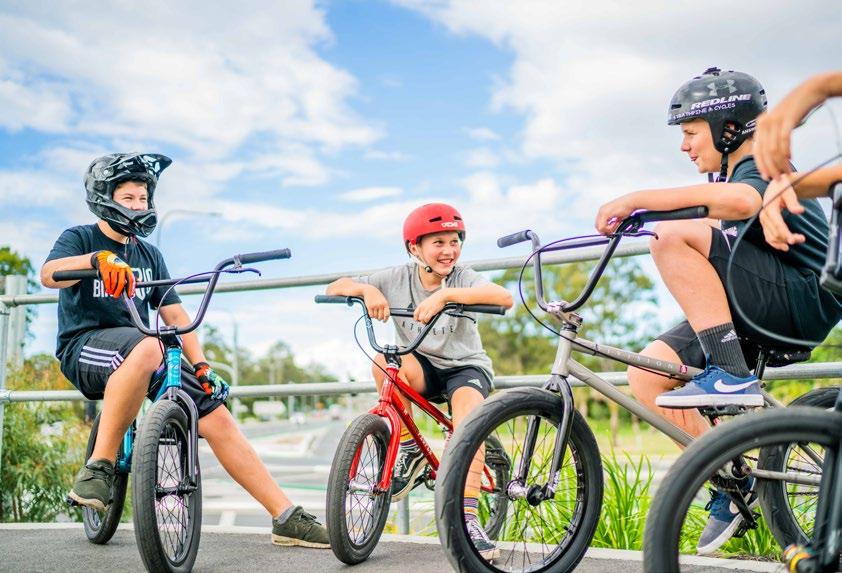
Natalya, from Central Queensland, was Australia's first and only female freestyle BMX Olympian when the discipline made its Games debut at the 2020 Tokyo Olympic Game. Starting in the sport at the age of eight at her local skatepark on the ride home from school, she has gone on to win the 2019 Vans BMX Pro Cup and is the Australian National Freestyle BMX Champion for 2019, 2020 and 2021.
The day will include BMX workshops for 6-17 year olds, including a ‘girls only’ session, a ninja course, food vendors, jaw-dropping BMX demos, prize giveaways and FREE bike safety checks – there’s something for the whole family.
Must bring a safe and suitable BMX bike, helmet, closed in footwear, water bottle and if possible knee pads, elbow pads and gloves. Thanks to RampFest and TRACTION, a limited number of BMX bikes will be available for loan. Sessions are suitable for ALL ability levels from beginners to experienced riders. Presented as part of Brisbane City Council’s Cycling Brisbane program. Date: Saturday 17 December
Food waste also drives up things like food prices. So we waste more food, food becomes a more in-demand commodity, and prices will go up. Which again affects a large part of the population that are already potentially struggling financially.
But with some preparation, a little restraint and a solid strategy, you might be able to avoid at least one type of hangover this holiday season.
Developed economies generate waste at far greater rates than their share of population, and developing nations are pushing back on our strategy of shipping waste offshore. We saw the results of this in Victoria recently with a number of councils forced to send recycling to landfill. And the food system globally is in a waste crisis, experts say.
Mark Boulet, a research fellow at BehaviourWorks, part of Monash Sustainable Development Institute, says people don’t always recognise the broader potential impacts of food waste. That bag of spinach that turns to mush in the fridge is a symptom of a bigger problem.
"Food waste emissions account for about one-quarter of agriculture’s emissions overall, so it’s contributing to something that we well know is going to make life a lot harder for humans on the planet, which is climate change."
With climate change, the land available to grow crops becomes threatened, requiring more resources such as fertilisers, water and energy.
It’s a symptom of a system which is one of over-consumption, and means pretty much that, unfortunately, the human race is going to be running out of some of the fundamentals that we need to live.
The good news, according to Monash experts, is that a growing number of people are concerned about the way we generate, dispose of and process waste, and there are plenty of simple strategies we can all employ to reduce our waste footprint.
But what about those piles of paper and plastic we generate as part of the joy of giftgiving? Monash expert Kim Borg says the health of our planet depends on us rethinking how we use and dispose of plastic, especially single-use plastic.
“Estimates at the moment say that if we don’t change our behaviour… by the year 2050 there’s going to be more plastic in the ocean than fish,”
Eighty per cent of plastic either goes to a landfill, or ends up in the environment, and when it ends up in the environment, it pretty much ends up in the waterway, because it’s light and it floats and it’s waterproof. We’ve cultivated a convenience culture when it comes to plastic, but increased awareness, better understanding and the power of social media is helping people understand how simple and easy it can be to tackle this issue. Borg, who worked with the Victorian state government on the plastic bag ban instigated in 2019, says she believes as more people take individual action, more businesses and governments will get on board.
“The more people doing these behaviours, the easier that they’re finding it, and the more social licence the government has to do more initiatives as well.”
By Mark Boulet, Research Fellow with BehaviourWorks Australia, MSDI and Kim Borg, Research Officer, BehaviourWorks Australia. This article originally appeared in The Monash Lens. Read the original article here.
Festive celebrations can leave you with more than one kind of hangover, so what should we do with the debris of leftover food, gift wrapping, decorations and mountains of plastic packaging?
• Have a plan when you go shopping
• Before you go, check what’s in the pantry and your fridge
• Write a shopping list and stick to it, to avoid getting caught up by promotions and discounts
• Store purchases properly – food should be at four degrees; that’s the optimal temperature to keep food fresh longest
• Cook only the amount that you know you’re going to eat
• Have a plan to reuse your leftovers.
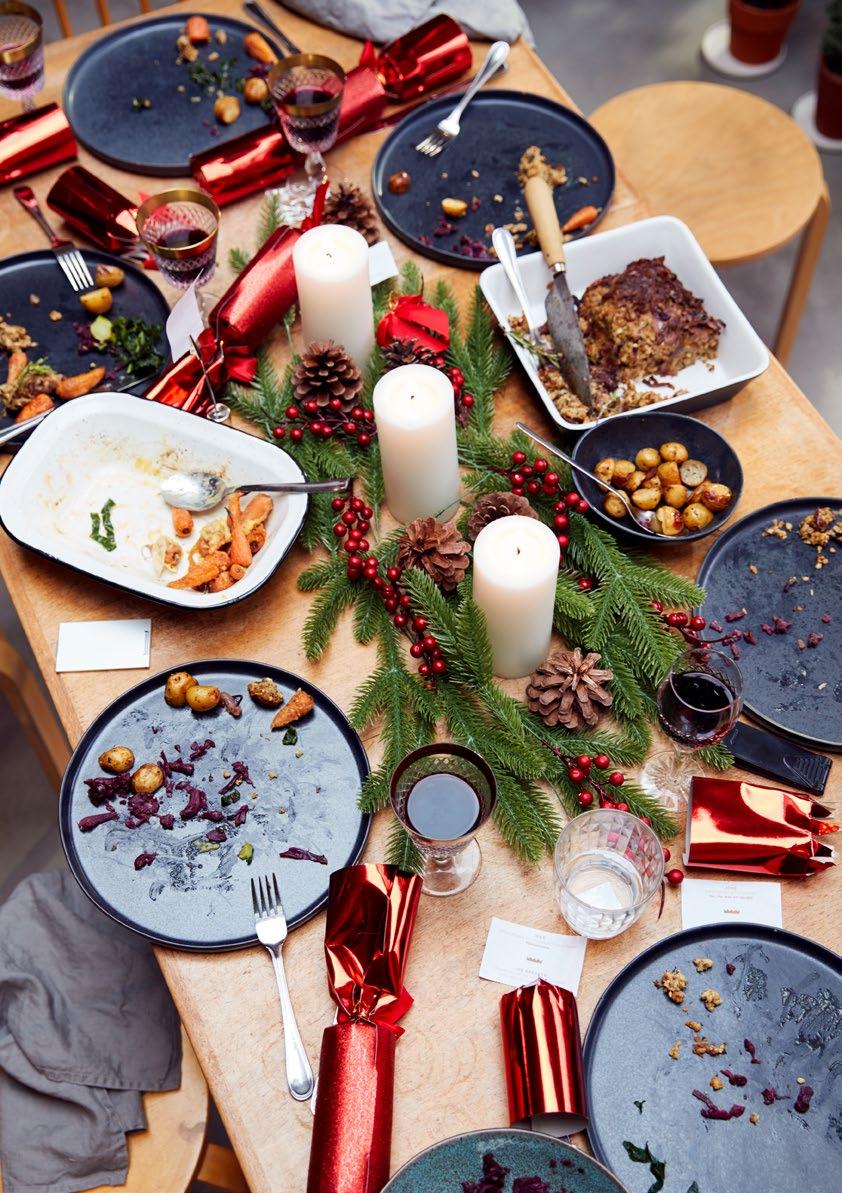
• Bring your own containers whenever you can to avoid packaging
• Talk to your favourite shops and outlets about bringing your own containers
• Say no to single-use items including straws, bottles and utensils
• Make sure you’re recycling correctly – find out which items your local council collects
• Sustainability Victoria has great tips on recycling correctly
• Petition the government – write to your MP calling for improvements to the recycling system in Australia, or sign online petitions.
Ten lucky kids, who are beneficiaries of Starlight Children’s Foundation’s programs or services, were this year sent a selection of the top 100 toys to test and review to help Australians with their holiday shopping. As the holiday season fast approaches, children across the country will be eagerly awaiting the moment they get to unwrap their presents and maybe your kids would like some of these too!
The newly appointed toy testers – the Amazon Playmakers - have stepped in to help Aussies choose the best gift for their littlest loved ones by testing and reviewing Amazon Australia’s 2022 Top 100 Holiday Toy List.
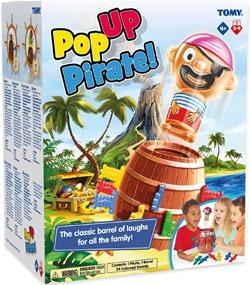
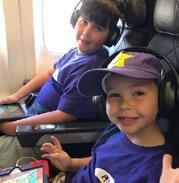
Now in its fourth year, our Playmakers were selected from across the country in partnership with Starlight Children’s Foundation, who work to brighten the lives of seriously ill and hospitalised children across the country.
From Pokémon, Barbie Dreamhouses, Little Live Pets, DJ beat boxers to toys classics, such as Playdough, our 10 inspiring Playmakers, have been putting a selection of the top 100 toys through their paces and giving them their tick of approval to enter the list.
Check out the trends taking Australia by storm and some of the reviews from the Playmakers:
From the reboots of early 90s and 2000s TV series, to throwback accessories including the bejewelling come-back. Bringing back nostalgic pastimes has become a big postpandemic mood, from Pokémon and an epic Barbie Dream House in a classic 2000’s pastel pink colour to Home Alone LEGO - this toy trend is one that Millennial parents are sure to get involved with.
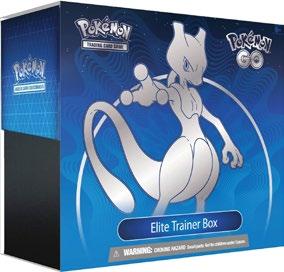
8, Tapping, WA

Australians are looking for value more than ever this year, with savvy shoppers on the hunt for budget friendly options. From Taco Cat Goat Cheese Pizza and Cocomelon Roto Plush Snacktime JJ Doll, to Eraser Maker, these are games which can be enjoyed by all for under $50*.
- Molly, 7, QLD
“I really enjoyed playing with the Pokemon Go Elite Training Box as I got to battle it out against my brother, challenging each other with who holds the most powers,” - Logan,
"I loved the Pop Up Pirate because you never know when he’s going to pop up. Then, when he does, it makes you jump and we all laugh.”
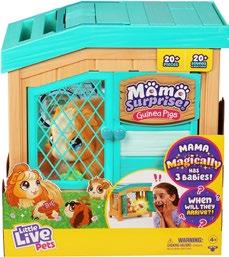
After a year of unpredictable weather, and another wet summer expected ahead for much of the country, kids have learnt to adapt by moving outdoor play inside with the help of trusty favourites including Nerf, John Deere Dump Truck and Little Live pets.
“Harper loves animals, so she was very fond of Little Live pets guinea pig toythat makes less mess than a real guinea pig! It’s such a delight to her.” - Mum of Harper, 6, Wollondilly, NSW
“I loved building the LEGO Speed Champions Mercedes-AMG F1 W12 E Performance (2 Car Models Set) and the Transformers Optimus Prime Action Figure that can transform into a truck and says, “I am Optimus Prime.”

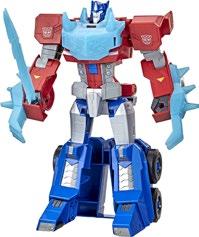
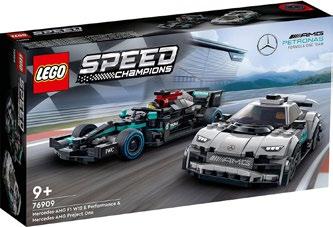
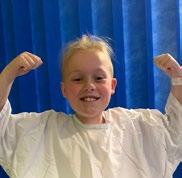


- Ben, 11, North Sydney, NSW
“The Monopoly Around the World Tour board game was my favourite as I like the competitive nature of board games and most especially beating my brother to travel the world.”Will, 12, Stirling, SA
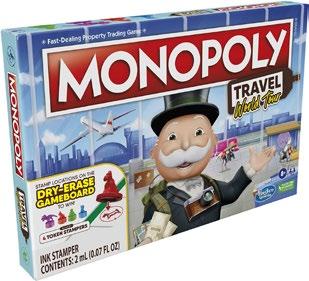
“The Megalodon Shark truck is my favourite because it’s insanely powerful! And goes on water.” - Taiyo, 5, Elwood, VIC
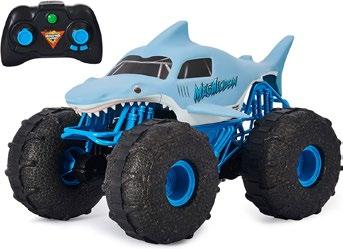
Toys are often a child’s first foray into a passion, hobby, or activity that stays with them as they grow into adults. Parents are recognising this and looking for toys that encourage children to discover their talents and passions through the world of make believe and role play. With a DJ Beat Boxer toy, Emma’s Art School and a Horse Show Trailer, kids can be whoever they want to be and experience the most exciting of adventures.
“Isla loves dressing up in fancy twirling dresses which is why she loved getting creative with her nails using the Cool Maker Go Glam U-Nique Nail Salon and feeling like a princess.” - Mum of Isla, 7, Melbourne.

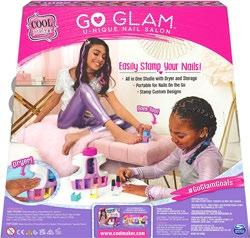
With play-based learning tools becoming an increasing favourite amongst parents and teachers, a rising number of new toys are being developed to support children’s development. From a talking microscope featuring Bindi Irwin to a coding starter kit compatible with an iPad, these games are bound to keep the kids busy and wanting to learn more for hours.
“Eden loves playing with hot wheels, construction toys and all emergency service superheroes. His favourite toy from this year’s list is the Hot Wheels Jurassic World Strike 'n Roar Giant Dino.” - Mum of Eden, 5, Woy Woy, NSW

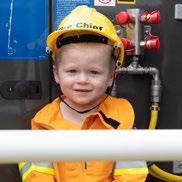
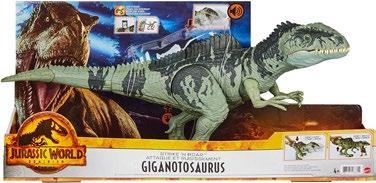
With the meteoric rise of games such as Roblox and Minecraft, coupled with a fascination in alternate and virtual universes, families will no doubt be adding tech, gaming and space-based toys to their child’s wish lists this year. From KidiWatch and MineCraft games to LEGO Star Wars and the Space Academy Game, watch your kids take off into orbit as they go forth to discover the next universe.
“Me and my brother had great fun playing with my LEGO Olivia’s Space Academy set as it made me think what it would be like going to Space and how cool it would be.” - Amelia, 7, Sydney.

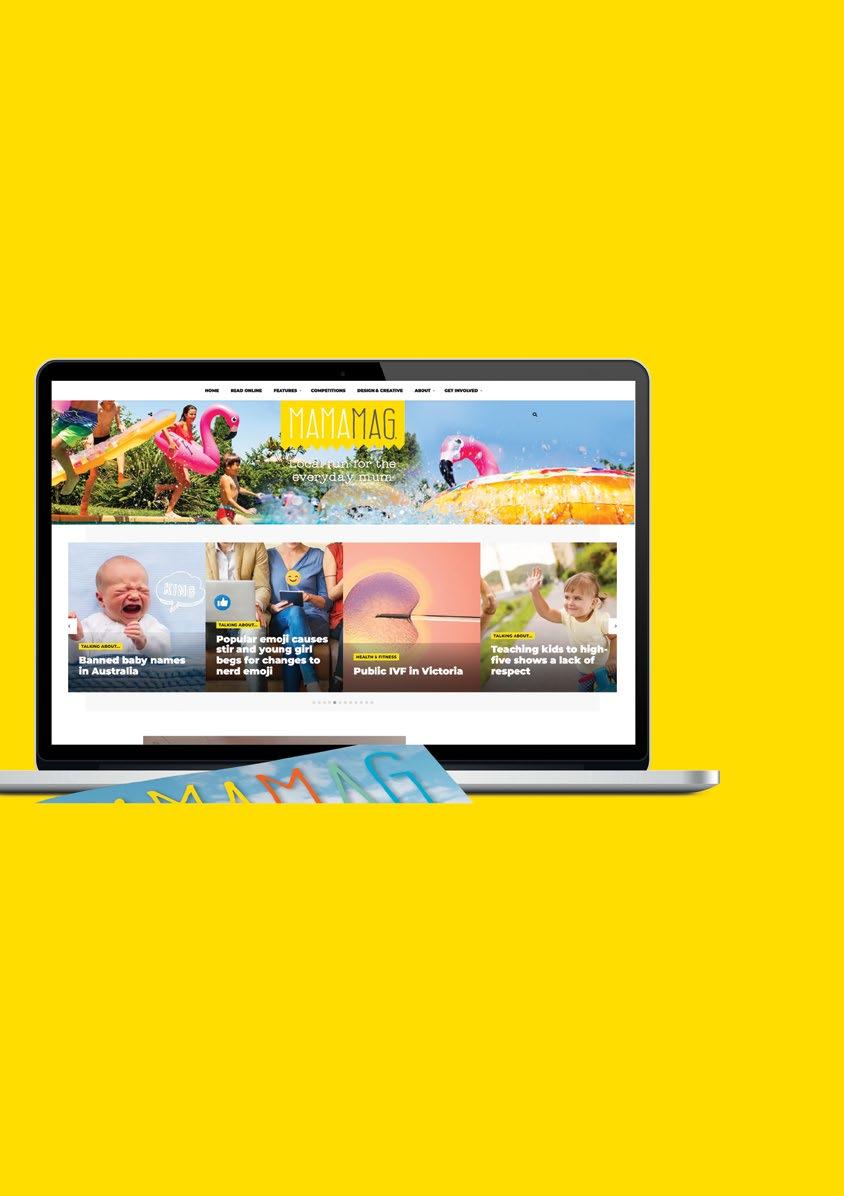

Christmas is a fun and happy time when you have small kids, and much of the excitement is inextricably tied up in the looming figure of the jolly man in red. Santa is everywhere, and deep down many parents feel that little shadow of dread of knowing they’ll one day have to pull back the veil and reveal “the truth about Santa” to their precious little ones.
It’s helpful to remember you’re not alone, and every parent living in a culture that recognises a version of Santa needs to have this conversation with their child at some point. But not everyone knows quite how to go about it. This is why, together with my coauthor Louise Cummins, I wrote Your Santa Agent Invitation, a brightly illustrated book that helps you explain Santa in a way that keeps the magic of Christmas alive.
We designed the book to be read aloud and acts as a sort of guided conversation that helps you to gently explain to your child how the concept of Santa first came about. Even more importantly, the book reveals that the magic of Christmas is in fact created by all the people around us and invites the child to become a Santa Agent who can now take an active part in the festive season.
Rather than the end of something, this is the start of something new and much more exciting: A chance for your child to help make Christmas magical for evermore.
Reading the book with your child is an excellent way to approach this conversation, but there are some other things you could also do to make the experience as positive as possible:
Choose your moment carefully
It can be difficult to know when your child is ready for the Santa talk and deciding when to broach this particular topic is entirely up to
you. Statistically children can be ready for this conversation anywhere from the age of six all the way up to 11 or 12, but you’re in the best position to know what is right for your child. And don’t feel pressured in any way by friends or family members who urge you to have the conversation before you and your child are ready.
After all, judging the right time can depend on many factors. Perhaps your child has started asking probing questions about how presents find their way into your house on Christmas morning, or puzzling over the practicality of Santa visiting the entire world in one night. Or maybe you’re simply keen to get ahead of any confusion or to pre-empt older siblings or cousins or classmates brutally explaining the facts.
Whatever the reason, remember it is your choice.
Make the conversation into a special experience
Choose a time when you’re not rushed or tired and can give your child your full attention. You might like to give the time a ‘special occasion’ touch by including some festive snacks such as Christmas biscuits and gently playing some festive music in the background.
Then sit down with Your Santa Agent Invitation and slowly read it aloud with your child. You can pause briefly any time you need to during the book, but we recommend trying to read all the way through it the first time to allow the complete message to be heard.
Then give your child time to absorb the ideas in the book and perhaps read it through a second time together, this time pausing wherever necessary to further explain or discuss any of messages. Give them a chance to ask questions and take your time answering them as clearly and honestly as possible.
This can be a little difficult and you might need to channel your inner politician here. You want to keep the conversation about Santa as positive as possible, so it’s best to avoid getting into discussions about anything negative such as any questions about lying or deception. Also don’t assume a negative reaction from your child and avoid statements such as “I know this is going to be difficult to hear” or “I hope you don’t get too upset to hear this” as this phrasing can encourage a bad response.
Instead approach this as good news and a positive transition. Now that your child is old enough and mature enough, they finally get to join the rest of us in being Santa Agents. Hooray! Welcome to the team! As we clearly demonstrate in the book, this is the start of something new and special and should be celebrated as such.
Reading the book and having this conversation are just the beginning, and it’s crucial that your child understand that now it’s time for the fun to truly start. Use the “Santa Agent Mission List” towards the end of the book as inspiration to help your child to come up with their own little list of festive tasks they would like to do.
Then help them to keep track of their list and tick the items off one by one. You can maybe set aside a “Santa Agent Hour” each week when you and your child can work together on festive tasks. And don’t forget to include your new little agent in any festive activities taking place in your household in the lead up to Christmas such as making and hanging decorations, wrapping gifts and writing cards. By making magic together you’ll ensure that Christmases going forward are better than ever before.
By Alex Lalak, co-author of Your Santa Agent Invitation, available from Amazon and Booktopia.
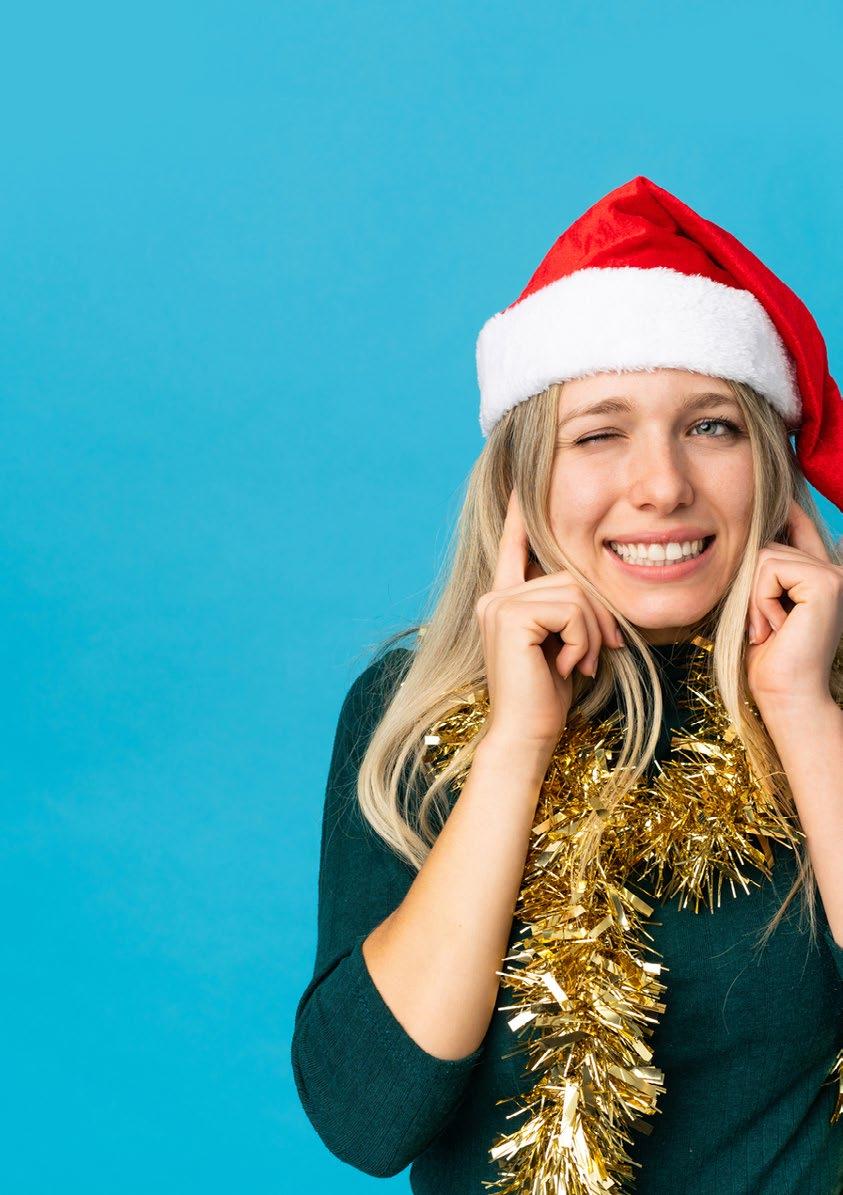
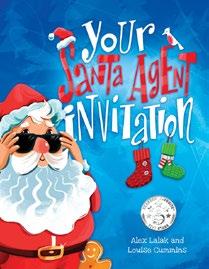
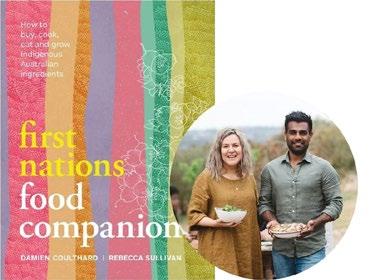
There is nothing better than seeing the excitement and happiness on a child’s face when they are greeted with food. Our son Mallee is a willing consumer of all foods, especially First Nations foods, and he’s always happy to discover a new or unfamiliar flavour.
From an early age, Mallee’s introduction to native foods has been an open lunchbox. My parents and family share harvested foods from Country, and when we receive a new package from a harvester, grower or farmer, Mallee is almost always the first to try. Muntries and quandongs, eaten handfuls at a time, are his favourite. With every handful comes an opportunity to share stories through a First Nations lens. It’s this sense of adventure, discovery and wonder that we hope to share with you in our book.
This book is an opportunity for all people, young and old, from all backgrounds, to taste the flavours of the oldest living, continuous culture in the world. If we approach it with open arms and an open mind, like Mallee we have the opportunity to learn the provenance of each native species that has been enriched by ancient soils and carefully cultivated by traditional owners guided by complex knowledge systems.
Celebrating First Nations peoples, their voices and resources, is an integral part of achieving our aspirations. The restoration of cultural practices reflective of complex kinship associations, strengthening the co-culture community relationships and the healing of Country are at the heart of restoring and reclaiming First Nations knowledge and creating a sustainable native foods industry that functions with integrity. We can all play a role in supporting and strengthening our communities through First Nations foods. This can be as simple as sitting with Elders as equals, and listening respectfully with your heart. There is so much to be learnt from our knowledge keepers. Our ancient lands hold vast amounts of information, with interwoven histories shared over millennia that map our continent.
Over the past decade there has been a rapid growth in the native foods industry: First Nations foods are now front and centre at gin distilleries, featured on menus at local cafés and top restaurants in most major cities. Native botanicals that have provided health and wellness for diverse nations over many generations are new-but-old flavours for some. It is exciting to see Aboriginal and nonAboriginal businesses celebrating cultural heritage through their chosen products, but many native species featured in this book are significant to their place and community, and it’s important that this cultural and intellectual property remains with traditional owners.
As I get older, learning more about my culture has become a matter of urgency. Across Australia, Aboriginal languages are at great risk, with some already on the brink of no return and many extinct. As we lose languages, we also lose histories and family heritage; important knowledge systems left to sleep in the land. I see our foods as an equally important element of these systems. Thank you for opening your hearts and minds to learning more about our rich cultures and amazing First Nations foods.
Damien Coulthard
$49.99.
Images and text from First Nations Food Companion by Damien Coulthard and Rebecca Sullivan, photography by Josh Geelen. Murdoch Books RRPA midweek meal that’s our take on a noodle salad using our rainforest favourite, the boonjie (or smallleaved) tamarind. Feel free to use any kind of noodle that you enjoy.
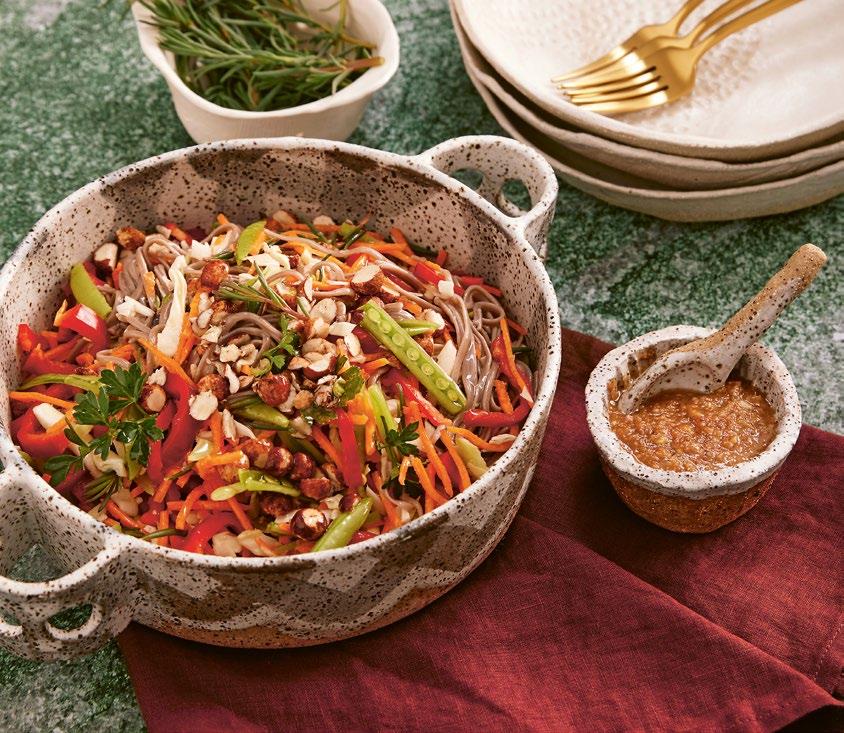
Serves: 2
Ingredients:
200g bean noodles or soba noodles ¼ cup (50g) karkalla or other native greens, chopped
2 carrots, cut into matchsticks
1 red capsicum, seeds removed, thinly sliced
1 cup (75g) finely shredded white cabbage
100g snow peas, trimmed and thinly sliced lengthways
1 tablespoon island sea celery leaves ¼ cup (40g) small-leaved tamarind, finely chopped
1 tablespoon ground roasted wattleseed (optional)
1 cup (60 g) wild basil leaves, chopped, to serve Chopped macadamia nuts, to serve
Dressing
1 garlic clove, crushed
¼ cup macadamia butter
3 finger limes, pearls squeezed
¼ cup (60ml) maple syrup
½ teaspoon sesame oil
1 teaspoon grated ginger
Method:
For dressing, place all ingredients in a blender with 1–2 tablespoons water and whiz to combine.
Season to taste with salt and ground pepperberry.
Place vegetables in a bowl, add tamarind and wattleseed, then pour in dressing, tossing to combine and coat. Serve topped with basil and macadamia nuts.
Substitution options:
Karkalla
Swiss chard or borage flowers
Island sea celery
Celery stalks
Small-leaved tamarind
Tamarind or unripe pineapple
Wild basil
Holy basil
Finger limes
Lime juice
Serves 10
2 cups fresh (or frozen and thawed) native cherries
3½ cups fresh (or frozen and thawed) cherries
1¼ cups riberries or lilly pillies
2 tablespoons caster sugar, plus extra to taste
6 strawberry gum leaves or 1 teaspoon powder 80 g tapioca (sago)
400g packet ladyfinger biscuits, or ½ a bought sponge cake
1–1½ cups Økar amaro Edible flowers, to serve
Wattleseed Custard
350ml milk
3 free-range eggs
¼ cup (30g) cornflour 1/3 cup (75g) firmly packed brown sugar
1–2 teaspoons wattleseed extract (see below)
2/3 cup pure cream
1 tablespoon pure icing sugar ½ teaspoon cherry essence
Method: For wattleseed custard, whisk milk, eggs and cornflour together in a saucepan over low-medium heat. Whisk constantly for 5 minutes, or until thick. Remove from heat and whisk in sugar and wattleseed extract until dissolved. Transfer to a small bowl, cover surface with plastic wrap and refrigerate until set.
Put cherries, riberries, sugar and strawberry gum leaves in a large saucepan and add enough water to cover by 2–3 cm. Bring to the boil over low-medium heat, stirring constantly. Reduce heat to low and simmer, continuing to stir, for about 2 minutes or until cherries are soft. Remove from heat and remove strawberry gum leaves.
Cook tapioca using the instructions on the packet and rinse under cold water to remove starch.
For cherry cream, whip cream and icing sugar with an electric hand mixer until almost thick. Slowly drizzle in cherry essence and continue to whip until thick enough to hold the mixer up without it falling off.
To serve, arrange biscuits or sponge in the bottom of a large glass serving bowl. Pour Økar over to your preferred level of sogginess. Spoon most of the fruit on top, then pour in wattleseed custard. Spoon tapioca on top, then a layer of cherry cream. Decorate with remaining fruit and flowers.
Substitution options:
Native cherries Cherries
Riberries or lilly pillies
Blueberries
Wattleseed extract
Ground coffee or vanilla extract
Wattleseed extract
1 tablespoon ground wattleseed
¼ cup boiling water
For wattleseed extract, add wattleseed to a small coffee plunger and pour in boiling water. Leave for 2 minutes to steep, then plunge as normal. (Alternatively, brew it in a tea infuser.)
Kind of like a super-grown-up chia pudding, in trifle form. Give it a go for any festive occasion — the flavours are incredible. You can use chia in place of tapioca if you prefer, and any fruity liqueur or syrup will work for the sponge.
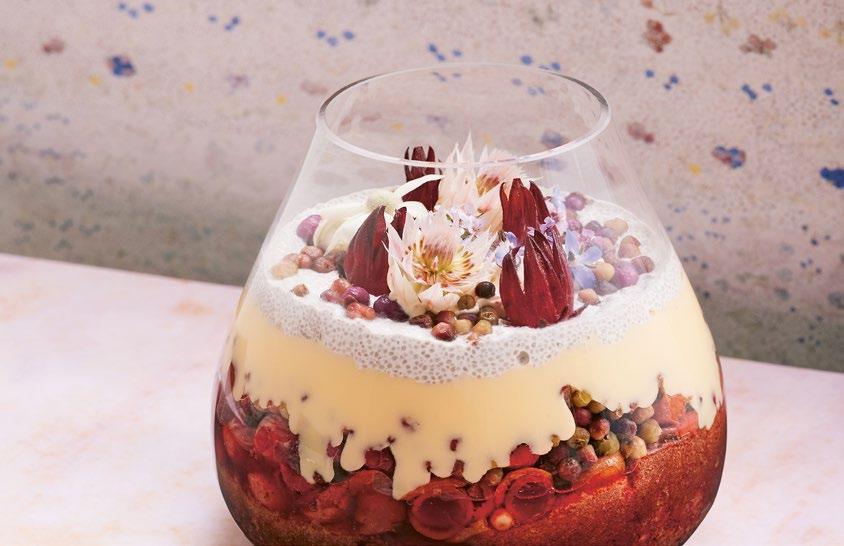
These ice pops recipes, one made with soda, one with yoghurt, recall super-hot summer days running under the garden hose in the backyard, ice pops dripping down onto the hot concrete, only to be quickly eaten by ants. The only difference here is that we’ve made ants a part of the ice pops! These are less sweet than those you may remember from your youth, and much more about the flavourings. We encourage you to play around with different additions to suit your tastes. You’ll need popsicle moulds and 4–6 sticks — we like to use thoroughly cleaned (and safe) sticks from the garden.
Makes 4-6
Soda Water Pops 100g raw honey
1 tablespoon green ants
Finely grated zest and pearls of 6 finger limes
2 cups (500ml) soda water
Yoghurt Pops
1¾ cups (460g) natural yoghurt
2 tablespoons raw honey
1 teaspoon green ants
1 small handful chopped native basil leaves (optional) Honey, to serve
Method:
For soda water pops, pour 100ml fresh water into a small saucepan and bring to the boil. Remove from heat, add honey and stir to dissolve. Add half the green ants (or whatever flavouring you’re using; with these we also like desert limes, lilly pillies,
quandongs, midyim berries, Tanami apples or muntries), return to the heat and simmer for 5 minutes, then remove from heat and leave to infuse for 30 minutes. (This can be done the day before and left in the fridge overnight to infuse.)
Pour through a sieve into a jug, squashing ants with the back of a spoon to squeeze out all the liquid. Add finger lime zest and pearls and stir well. Add enough soda water to bring the total volume up to 600ml.
Add your choice of ingredients to moulds, then pour in the liquid. Freeze for 1–2 hours, insert popsicle sticks, then allow to freeze overnight. Unmould and enjoy. Note, for two different colours like in our soda pops in the photo, freeze half first, then pour in the second half once the first is set — this will take
about 2 hours. We used only a little soda for the orange part, and mostly soda for the white part.
For yoghurt pops, add yoghurt and honey to a food processor and whiz to combine. Stir in green ants and basil (or whatever flavouring you’re using; with these we also like rosella leaves, river mint or petals of native flowers).
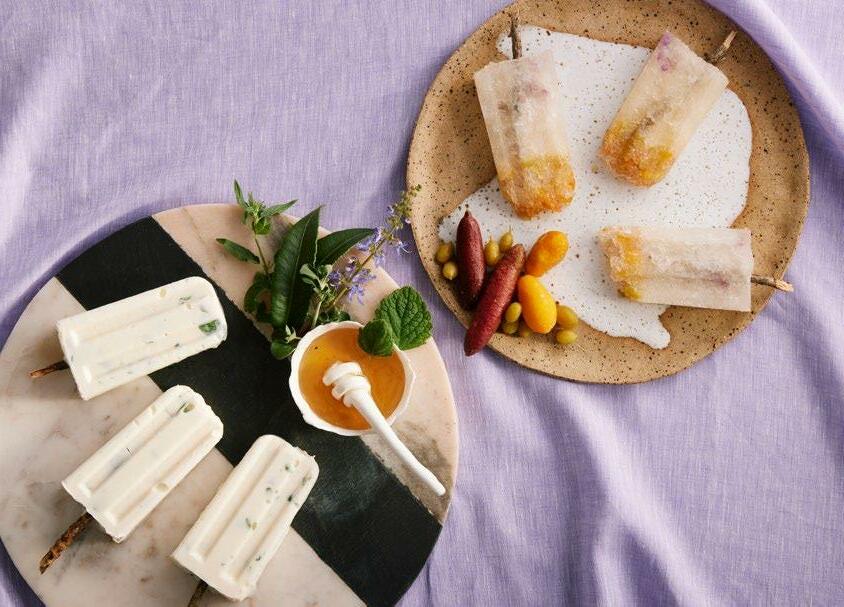
Pour into popsicle moulds, pushing some ants and herbs to the edges of the moulds so you can see them when they’re unmoulded. Place a popsicle stick into each mould, then freeze overnight. Unmould and enjoy with some honey.
Substitution options:
Green ants - citrus zest Finger lime - lime zest/juice Native basil - basil
The backyard pool is a staple for many Australian homes but Olympic gold medallist, Poolwerx ambassador, and mother of three girls, Libby Trickett shares how she uses the pool for more than just swimming!
A vocal mental health advocate, Trickett said while the pool has been there for some of her life’s greatest achievements, the role it plays in her life now is more restorative.
“I’ve clocked thousands of hours in the pool training and competing over my life but while I cherish these memories, the pool is now a place to take care of my mental health and connect with friends and family. Today, a pool is about so much more than just swimming!”
Indeed, Australians are becoming more health conscious, with pools now playing an important role in fitness, mental health management, relaxation and sports recovery. Pool water treatment is also evolving towards health-conscious alternatives that promote wellness through salt substitutes like magnesium or chemical and chlorine-free swimming environments.
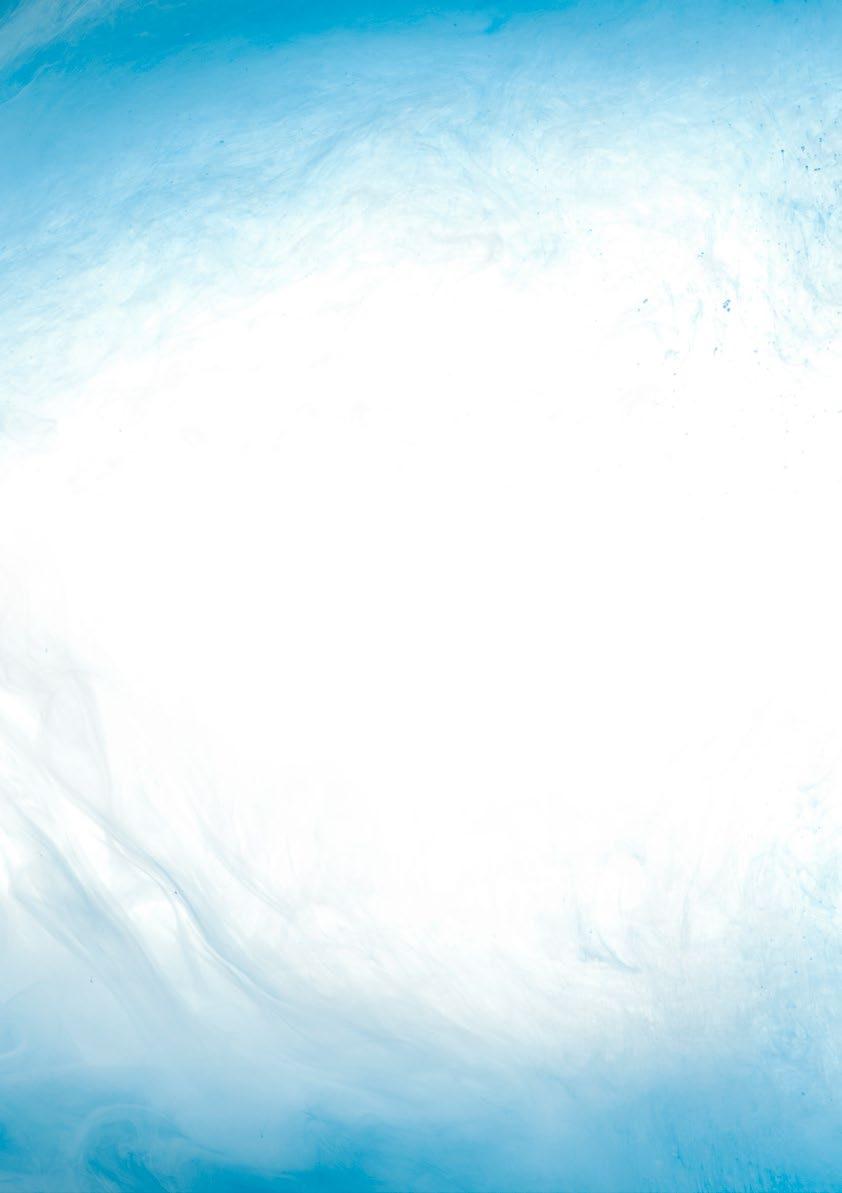
Poolwerx CEO Nic Brill has seen a strong shift in Australians taking a holistic health approach to their pools.
"We’re seeing the role of the backyard pool change from a source of kids’ entertainment to becoming the centrepiece of social gatherings, a form of exercise and an important way to take care of your mental
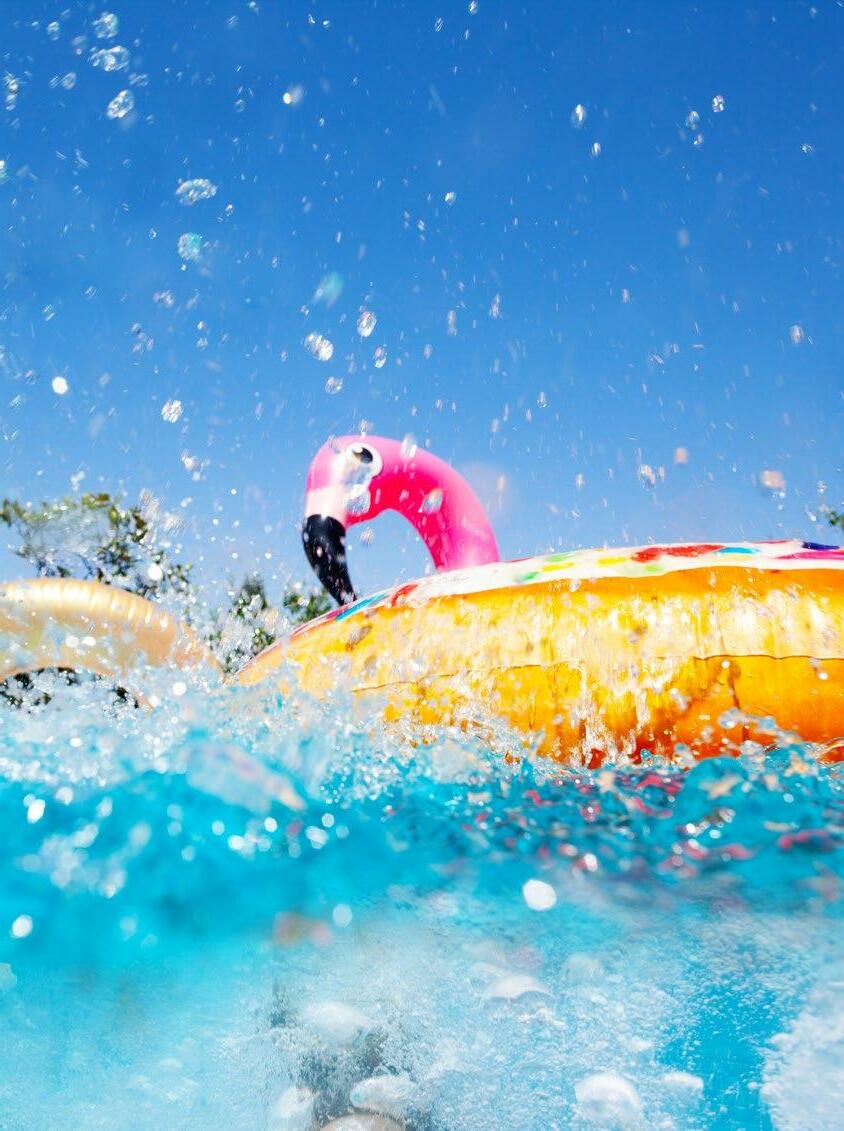
health. Even the role of community pools has changed from just summer fun to offering hydrotherapy, aquaerobics, community sports and events and a social gathering space.
Pools will always be a staple of Australian life, and we love seeing new ways Australians make the most of their pool."
Movement is an important part of leading a healthy lifestyle and keeping your mental wellbeing in balance. Get creative with exercise as a family with a water basketball hoop or pool volleyball, take some ‘me’ time by swimming laps, or add a banded resistance if you’re in a plunge pool, or break out the classic pool games like Marco Polo.
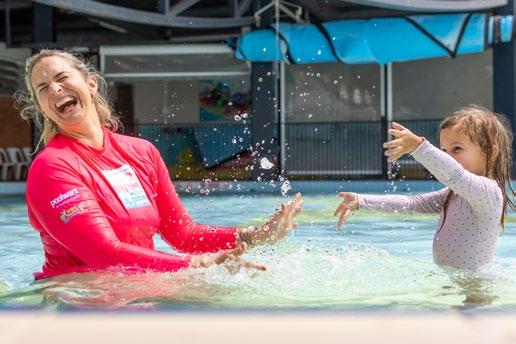
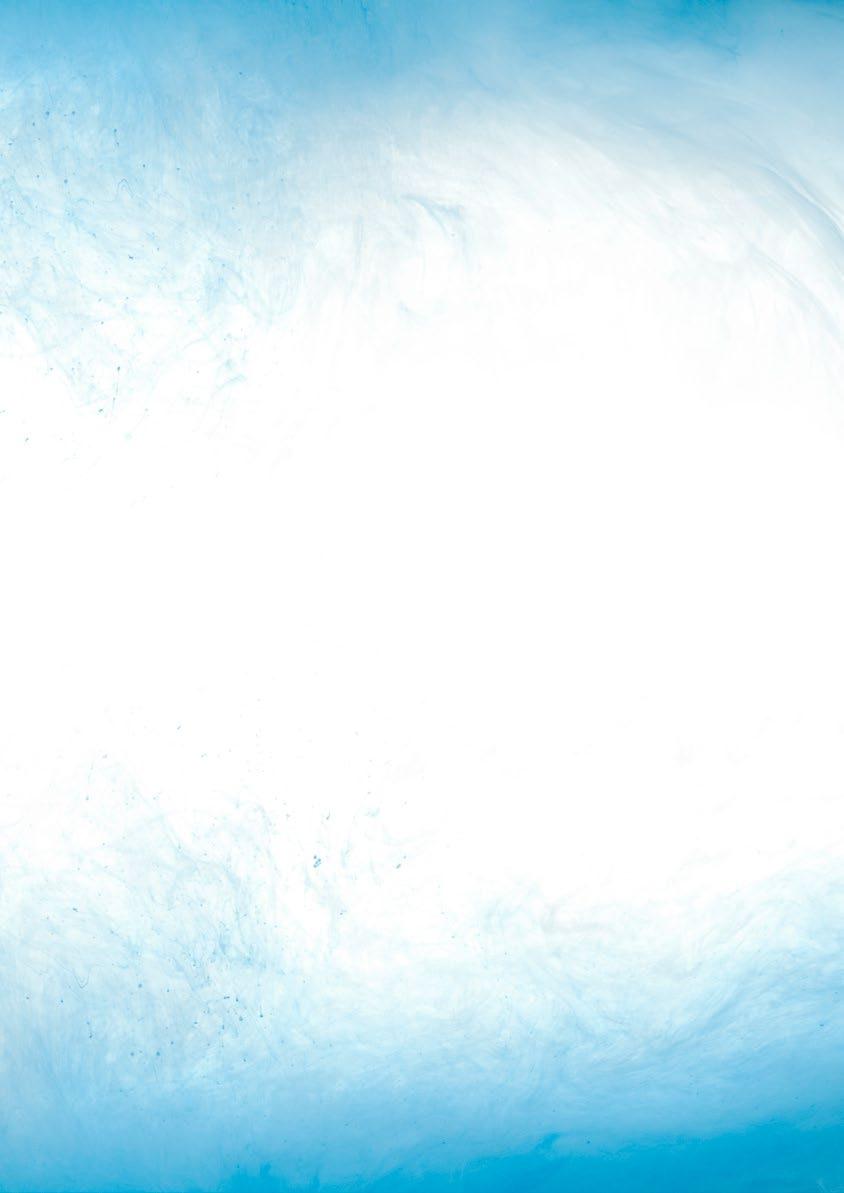
Magnesium has a magnitude of health and wellness benefits including reducing stress and anxiety, muscle recovery, stimulated hydration and improving sleep. More and more gyms are opting for magnesium pools for recovery and we have seen the rise of floatation tanks using salt and magnesium for float therapy and relaxation. No longer just for day spas, mineral pools can now be used in your own backyard, any chlorine pool can be converted to become a mineral pool. Using natural minerals like salt, magnesium or potassium and a water purification system to keep your pool clean can significantly reduce the pool’s need for harsh chemicals that cause itchy skin and stinging eyes and enjoy gliding through smoother, cleaner water.
A recent Poolwerx survey shows that 83% of pool owners use their pool for wellbeing purposes. The feeling of being weightless is incredibly restorative so combine that with blocking out the noise of daily life for some alone time and you’ve turned the backyard pool into your own day spa.
Taking care of your mental wellbeing isn’t just physical, it’s also social. Use the pool as the centrepiece of your next gathering to spend quality time with friends and family. The home cocooning trend born from the pandemic saw Australians invest more money in making their home a sanctuary, which includes making their outdoor space a welcoming oasis. From outdoor dining to poolside seating and lush gardens, Aussie backyards are the perfect place to spend warmer nights around the pool.
Childhood obesity is unfortunately on the rise in Australia so incorporating fun, incidental exercise in your child’s routine is important to keeping them healthy and strong. Once the homework is done, encourage the kids to jump in the pool rather than turn on the TV or gaming console. Keep them entertained with toys like water balls, dive sticks and pool noodles.
Here are Libby’s five ways to make the most of your pool as the weather starts warming up:
Why a cheese board can be your nutrient-packed best friend for entertaining this Summer.
With the holiday season just around the corner, most of us prepare to indulge. Be it Christmas lunch with the family or a festive barbeque with friends, summer is a time associated with whimsical bliss, and often overindulging. But what if things were different this year? To help you feel your best, Dr Preeya Alexander – mother, TV host, and trusted GP – has shared her top tips for a balanced diet this summer, and it all starts with a cheese board.
Maintaining a balanced diet through every season is key for Preeya, her family, and her patients. As an advocate for all food groups, Preeya believes no food group should be cast out, and that dairy is often one of the food groups many look to unnecessarily restrict.
People assume any fat in the diet is bad, however, fat is an essential part of a balanced diet. It’s key to think about limiting harmful fats in our diet, like saturated fats, and getting the right amount of good ones. Sometimes people think that cutting any fat out is the answer to limiting saturated fats, however, that’s not the case and there is evidence that dairy foods like cheese and yoghurt do not raise cholesterol (in particular LDL) in the same manner that butter can.
Regular consumption of dairy as per the Australian Dietary Guidelines, leads to stronger bones and muscles throughout every life stage and a reduced risk of type two diabetes. It also provides us with a great source of key nutrients– such as zinc, vitamin A and potassium – in addition to calcium (which everyone tends to know about!).
Australian Dietary Guidelines recommend that most people need 2-3 serves of dairy per day. A serve is considered to be 1 cup of milk, ¾ cup of yoghurt or 2 slices of cheese (40 grams), so it’s really important to think about your diet and where you can add some delicious dairy in! So how exactly can a cheese board be your best friend for summer entertaining?
Now that we know cheese plays an important role in a healthy, balanced diet, a cheeseboard doesn’t have to be a ‘treat’. In fact, it is a great low-fuss option that can be easily put together whilst you entertain over the summer season.
Aside from plenty of delicious dairy, a cheese board is an ideal way to incorporate other food groups into your entertaining plates, ensuring both you and your guests are getting plenty of goodness in!
When you’re building your cheese board, try to reduce discretionary foods and keep your platter balanced. Pairing cheese with fruit such as pear, apples, and grapes or veggie sticks like carrot, celery, or capsicum, as well as pickled vegetables, is a perfect place to start. Having all those veggies on the plate gets you closer to the 5 recommended serves per day and the cheese gets you closer to the 2-3 serves too!
You could also include a dip like hummus (thank goodness chickpeas count in your vegetable intake!) that will bump up vegetable intake and is very easy to whip up at home, or a yoghurt-based dip to incorporate more dairy and ensure you’re meeting those daily serves. My favourite yoghurt-based dip is tzatziki because it is also packed with cucumber for an additional veggie hit.
Finally, I always opt for a wholegrain cracker for some extra fibre!
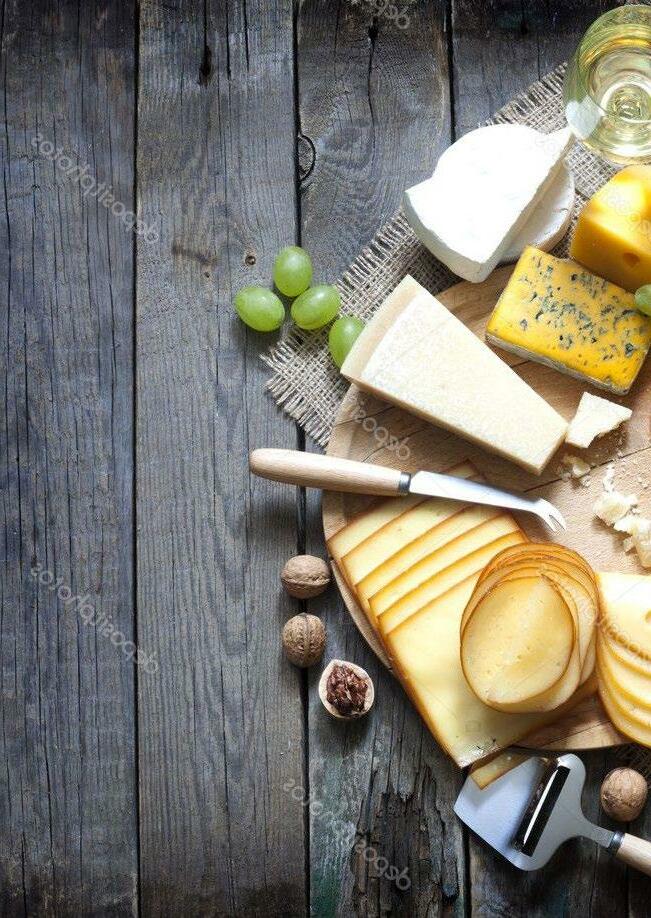
It’s important to think who will be at your summer gettogethers, and cheeseboards can be just as exciting (and healthy) for kids, as they are for adults.
When I’m putting together a cheese board for my little ones, I pick simple cheese options that I know they love and always try to pair it with rainbows.
Incorporating healthy colourful ‘rainbow’ foods is a great way to entice the kids to enjoy the nutritional benefits a cheese board brings, knowing they look appealing, and each come with their own health benefits.
If the kids too can sit around the summer table and tuck into some cheese on celery sticks, they’re getting both a serve of veggies and some much-needed dairy to nourish their growing bones. If I whip up a tzatziki with cucumber in it, that they’re enjoying on a wholegrain cracker, I know they’re getting a triple threat of dairy, veggies, and wholegrains – it’s win win!
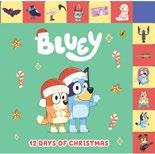
Join Bluey and count down the 12 days of Christmas. A gorgeous tabbed board book for kids of all ages, the content is super-Aussie and will bring many giggles and squeals of delight with all Bluey fans.
There are garden gnomes, bin chickens, magpies, yabbies and even “a fruit bat in a mango tree”! Yes, you’ve got to sing that one in your head!
Published by Puffin. RRP $19.99.
Come Together is a heart-warming, debut picture book for children aged 5 and up from pop artist Isaiah Firebrace, inspired by his petition to the Australian Government calling for Aboriginal history to be taught in every classroom. In this essential book, Isaiah, a Yorta Yorta and Gunditjmara man, establishes a foundation of First Nations knowledge with 20 key topics. Alongside bright and contemporary illustrations by Mununjali and Fijian artist Jaelyn Biumaiwai, Isaiah connects us to each topic through his own personal story and culture, from the importance of Elders to the Dreaming.

Published by Hardie Grant Explore. RRP $24.99.
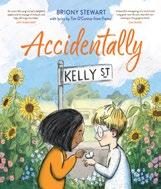
Author-illustrator Briony Stewart brings the iconic Australian hit song ‘Accidentally Kelly Street’ by Frente! to a new generation in a touching picture book adaptation that delivers a timely message of optimism, belonging and community. Featuring all the original lyrics written by musician Tim O’Connor and beautiful artwork by Briony, the book comes as indie pop group Frente! marks 30 years since the release of this iconic song and their ARIA-award winning Marvin the Album.
Published by Affirm Press. RRP $24.99.

AC/DC AB/CD - The high voltage alphabet by Paul McNeil
Educate your kids about the greatest rock ‘n’ roll band of all time and teach them the alphabet at the same time! The definitive A-Z of AC/DC that’s as fun for the kids as it is for the adults. Join Angus, Malcolm, Bon, Brian and the boys for a classic stroll through the alphabet. Every page leaps out with colour, humour and the band’s history as you wind down the Highway To Spell. "A is for Angus, who thinks it’s good luck, to wear a school uniform, and walk like a duck."
Published by Love Police Books. RRP $24.99.
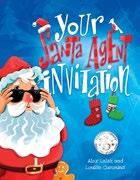
Your Santa Agent Invitation is a picture book written in a gentle and easy rhyme to facilitate an honest discussion about Saint Nick, but where parents are still in control. The book shows children that knowing the identity of Santa is actually a cause for celebration, teaching them they have a special role to play in keeping the magic of Christmas alive. A delightful way to navigate one of the most awkward parent/child conversations, enabling an honest discussion with warmth and cheer. Self Published. RRP $27.45

From the master storyteller of the bestselling Parvana books comes a timely new novel set in contemporary Afghanistan, featuring Parvana and Shauzia continuing their mission to protect women and girls from their dire reality under the rules re-imposed by the Taliban. In Kabul, 15-year-old Damsa runs away to avoid being forced into marriage by her family. She is helped by Shauzia who takes her to her friend Parvana's Green Valley school.
Published by Allen and Unwin Children. RRP $16.99. Age 11-14.
In Diper Överlöde, book 17 of the Diary of a Wimpy Kid series from #1 international bestselling author Jeff Kinney, Greg Heffley is finding out that the road to fame and glory comes with some hard knocks.

When he decides to tag along with his brother Rodrick’s band, Löded Diper, Greg doesn’t realize what he’s getting into. But he soon learns that late nights, unpaid gigs, fighting between band members, and money troubles are all part of the rock ’n’ roll lifestyle. Can Greg help Löded Diper become the legends they think they are? Or will too much time with Rodrick’s band be a diper överlöde?
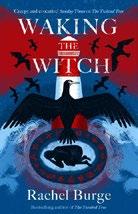
Published by Puffin. RRP $14.99.
A darkly spellbinding story of witches, sisterhood and coming of age, steeped in Welsh mythology and Arthurian legend. Ivy has spent years looking for her birth mother, but when she finally finds her on Bardsey Island, she is shocked by what greets her. According to folklore, the cormorants that fly over the remote Welsh isle are the terrifying witches of Arthurian legend - and they are searching for Ivy. Her mum warned her not to come and to stay away from the lighthouse, but now it's too late. As the shadows draw closer, Ivy must look deep within herself if she wants to survive. For not every story in folklore is true, and some evils aren't what they seem..
Published by Allen and Unwin Imprint: Hotkey. RRP $17.99
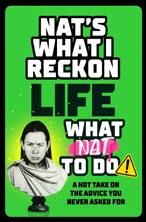
Everyone’s favourite lockdown chef is now dishing out the life-advice! Nat’s got a loud mouth and a taste for taking the piss out of stuff – it’s how he lives, laughs and loves. Nat has zero qualifications as a philosopher or life coach, and he doesn’t feel like becoming either one anytime soon. But as someone who has struggled to find the ray of positivity in most days of his life, he knows what it’s like to feel the relief from a moment of joy. So buckle up for Nat’s unrequested take on pushing back against expectations and rolling through life with some laughs and kindness like a real, righteous ratbag!
Imprint: Ebury Australia RRP $29.99
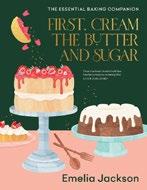
This beauty includes comprehensive chapters on Cookies, Cakes, Choux Pastry, Tarts and working with yeast. You’ll also find a couple of sneaky savoury recipes in there, but the bulk of the book is angled to all things sweet. It covers a range of skill sets and experience, from the humble chocolate chip cookie to the more advanced chocolate entremets and compressed choux pastry. Along with the recipes, Emelia has included a few tips and tricks she’s picked up along the way to make your baking experience easier, less stressful and overall, more enjoyable.
Published by Murdoch Books. RRP $59.99.
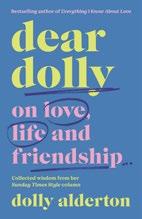
Since early 2020, Dolly Alderton has been sharing her wisdom, warmth and wit with the countless people who have written in to her Dear Dolly agony aunt column in The Sunday Times Style. In this collection of her favourite letters you'll find breakups and body issues, families, friendships, dating, divorce, the pleasures and pitfalls of social media, sex, loneliness, longing, love and everything in between. Without judgement, much-chronicled adventures in love, friendship and dating, Dolly leads us by the hand through the various labyrinths of life, proving that a problem shared is truly a problem halved.
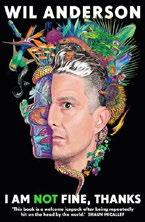
Published by Penguin - Fig Tree. RRP $35.00
Good sense, good jokes, and good WIL - a book about enduring turbulent times with humour, community and just a dash of Apple Cider Vinegar. What do you get when a housebound comedian is left with no option but to make comedy using only a rampant washing machine, a lot of Vaseline (it's for the pipes - no, not that pipe), a roast chook and an unused exercise bike to keep him company? You get I Am NOT Fine, Thanks. From prime ministers who don't hold a hose, to billionaires who think they're astronauts, to people who think lizards are ruling the country and that thermometers are wiping your memory, it's abundantly clear that the world is going to hell.
Published by Allen & Unwin. RRP $32.99.
However a poll of 1,000 Australian adults1 found: 4 out of 5 Australians are unaware Australia could become the first country in the world to eliminate cervical cancer
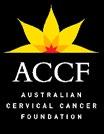
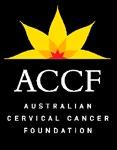
Half of Australians did not believe they could play a role in eliminating cervical cancer
This included 62% of people identifying as male and 41% of people identifying as female Common reasons cited:
• Lack of knowledge
• Not having a cervix
• Not having a scientific or medical background
Despite our world-leading cervical cancer prevention programs, many Australians remain unclear about what causes cervical cancer or how to prevent it
Only 5% correctly identified most Australians2 will have at least one HPV infection in their lifetime
43% did not recognise HPV vaccination as a prevention strategy
32% did not identify cervical cancer screening as a prevention strategy
Despite our world-leading cervical cancer prevention programs, many Australians remain unclear about what causes cervical cancer or how to prevent it.
Australia was the first country to launch a national HPV vaccination program in 2007 but today many Australians are unaware of the program or catch-up options
41% knew girls in Year 7 or 8 were able to receive the free HPV vaccine
15% knew boys in Year 7 or 8 were able to receive the free HPV vaccine
35% were aware that girls aged ≤19 years can receive free HPV vaccines if they have missed doses at school and only 11% were aware that boys aged ≤19 years could also do so
Australia could become the
To inspire customers
backyard this Summer, no matter the size of the space, Amazon Australia has partnered with The Block 2021 Garden Challenge winners Jesse Anderson and Kirsty Lee Akers to create some great ideas.
“We know first-hand how much love and time Aussies pour into their backyards and outdoor spaces – they’re a real place of pride and an extension of the home. The sky really is the limit these days, with so many ways to put even the smallest spaces to use. We hope Amazon’s backyard soundtrack and our DIY guides will inspire Aussies to continue to enjoy and make more heartfelt memories when in their backyards, no matter the size.”
Children spend a lot more time on devices than we did when we were kids, so finding ways to keep them active can become a challenge. Amazon Australia has a huge range of products to help turn your space, no matter what size, into a fun play area. The great thing is, you don’t have to pack the kids in the car and drive to the park, you can create a playground right in your own backyard.
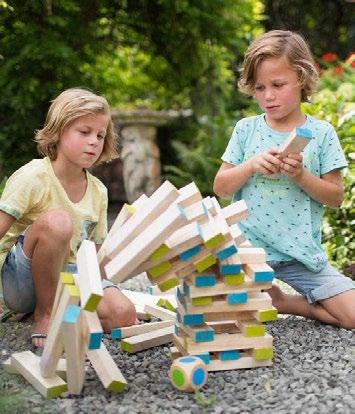
to get stuck into their
Now that Summer is here and the weather is warm, it’s the perfect time to get the kids outside to play in the backyard.
The first thing you will need to do is choose your space. Do you want to turn your whole area into a play space or do you want to dedicate one section? No matter what size playground you decide to go with, you need to choose an area that is flat and level, give it a mow and remove any stray tree branches or debris that may have fallen or gathered in the area. Think about the surface, if you are lucky enough to have soft grass, your job is done! If not another great alternative to grass is faux grass, it’s very soft and very easy to maintain. If your space has a hard surface like concrete, you may like to lay down some foam flooring.
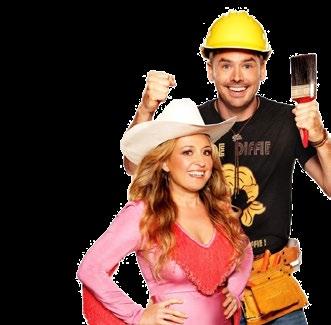
Now that you have the space all figured out, it’s time to upgrade the area with some fun equipment. For the little ones, we love this slide and swing set. It is very easy to assemble and takes up little space, we also love that it’s a 3-in-1 combo to keep the kids entertained.
If you have more space to work with, incorporating a play center that is multifunctional and features a swing, slide and sand pit will provide hours of entertainment and fun in the backyard. Or keep it simple and install a swing that hangs from a tree branch.
Every kid's dream is to have their own cubby house in their yard – which is especially great for those with a smaller space. We think back to the hours we spent in our own cubby houses growing up, creating our own special clubs with the other kids in our street, playing house or even just relaxing reading a book. Amazon is a great place to find cubby houses that are affordable and easy to put together, the kids will be putting up their “No grown ups allowed” signs in no time!
Our number one tip is to have a simple storage tub or outdoor cabinet in your play area to put the balls, cricket sets, dolls and outdoor games all tidy in one place.
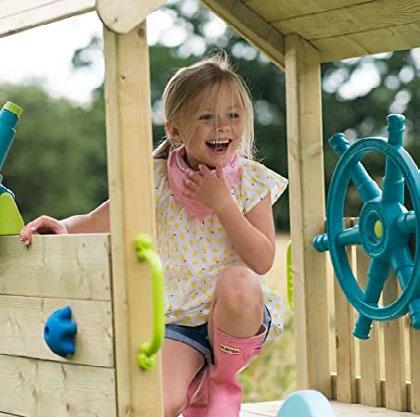
Amazon Australia has some great foam interlocking tiles that are so easy to install within a matter of minutes, it is soft underfoot and will help protect little knees when playing.
Another important step when choosing your space is choosing an area that is well shaded from the sun. If you don’t have any natural shade from trees in your backyard, consider installing a shade sail. It’s so important, especially in the warmer months to have an area that the little ones can play in without the harsh sun rays damaging their skin.
Once all the hard work of creating the play area is done, don’t forget to test it out. The kids shouldn’t be the only ones having all the fun! Testing the equipment out will also ensure everything is put together correctly and it is safe to play on, and of course, don’t forget to slip, slop, slap, seek and slide!
Christmas is coming and while it is a merry time of year for some, for families experiencing separation or who have separated, it can be a difficult time to navigate. Agreeing to parenting arrangements during Christmas school holidays, managing financial concerns and juggling office closures, can cause stress and conflict. Christmas can also be a trigger for feelings of grief and loss following a separation.
Relationships can bring out the best and worst in human nature. I should know, given I’ve worked as a family lawyer for more than nine years. In my early career, I did a lot of court work, mediations, and letter writing to resolve my clients’ parenting, child support and financial disputes. Nowadays, I provide an experience that helps couples separate together in an otherwise divisive, combative, and expensive legal process. For want of a better phrase, I help people to separate amicably. To give yourself the opportunity to separate successfully and amicably, I have some suggested tips for you:
If you understand where you and your partner are in the grief cycle, you’ll have greater insight into your immediate individual needs and can therefore work towards satisfying them. Grief is a natural emotional healing process we go through after experiencing loss, such as the end of a relationship. Grief is generally accepted as a five-stage process, ending with acceptance. Pushing someone to engage in a formal process before they’re in the right headspace with a degree of acceptance that the relationship is ending risks that person resisting any progress, distrusting their partner, and shutting down to the point where they disengage.
Communicating can alleviate and offer the opportunity to address fears through reassurance. Communication needn’t be verbal; written suffices. Silence altogether is unsettling because of the unknown, like separating itself – with the inevitable changes threatening your basic needs. When we feel threatened, our survival instincts to fight, flee or freeze come out. The imparting of information and listening to understand means there’s an opportunity for collaboration. *If you have safety concerns, get advice on how and whether it’s best to communicate with your partner.
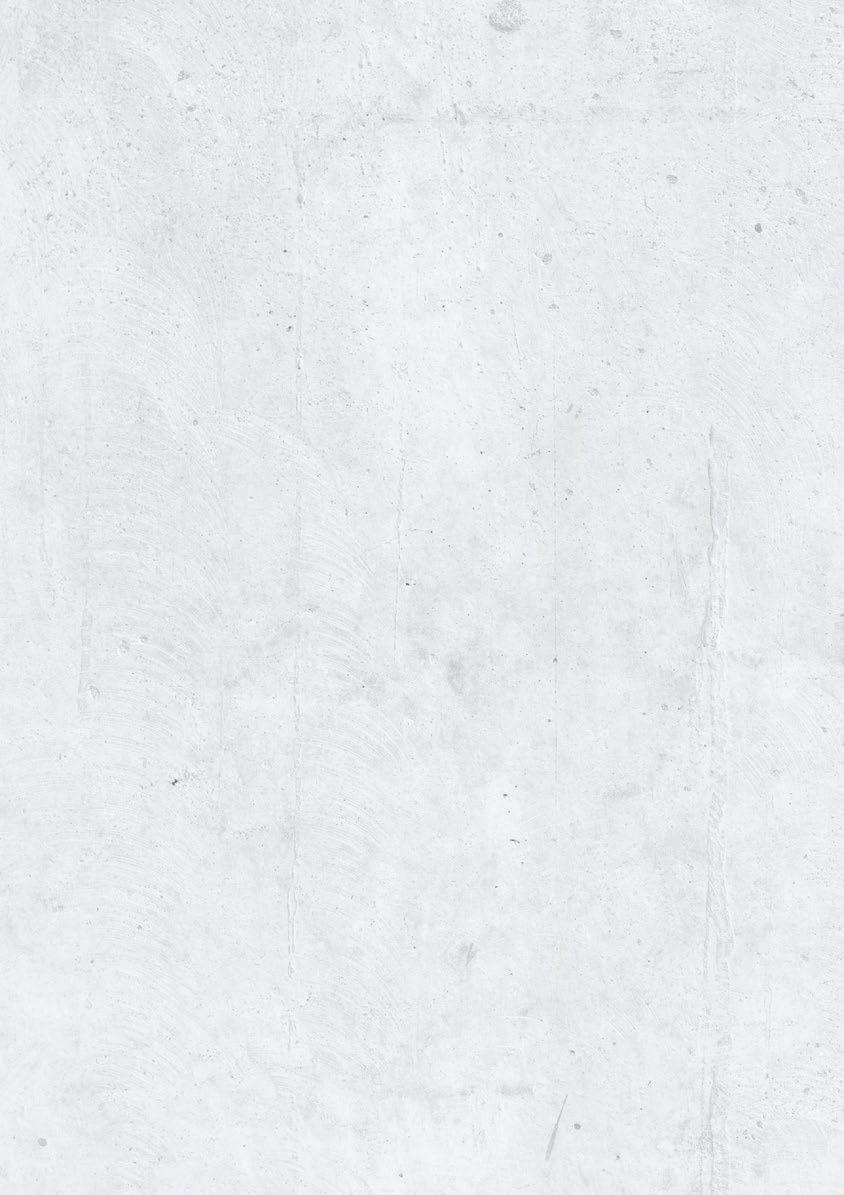
Clarity on outcomes and the steps involved to separate, reach an agreement, and make it all official means you’re better informed. You’re less inclined to be influenced by your partner and well-meaning friends and family. You’ll radiate confidence, and it may mean that your partner defers to you to take the lead on the separation process and guide him/ her. Get advice from a collaboratively trained family lawyer on the interim protective steps to consider taking, ideas to help you reach an agreement with your partner and what an appropriate financial, parenting, child support, and maintenance outcome looks like for you.
Align one another’s goals for a speedy, costeffective, civil-friendly, and easy experience. Identify what you already agree on, then work backwards to spend your time and energy focusing on those remaining issues requiring agreement. It’s a teamwork effort to start and end your relationship together. Using “you should” or “you must” create a divide. Likewise, sitting across from one another at a table or standing at the opposite ends of a room. Your separation is the adversary, not your partner. Get on the same page as your partner by using phrases of, “Could we…”, “how can we”, and “what do we need…”. Sit side by side and tackle the issues needing agreement together. Ask one another, “what do you need from me going forward?”.
Getting real about your needs involves thinking beyond the short term. Far too often, I see women settling for an outcome to remain on good terms with their partner for their children’s sake or because it’s just easier and everything is settled quickly. Some women forgo a superannuation split altogether or agree to a superannuation split amount that fails to reconcile the impact of decisions made during the relationship on her future.
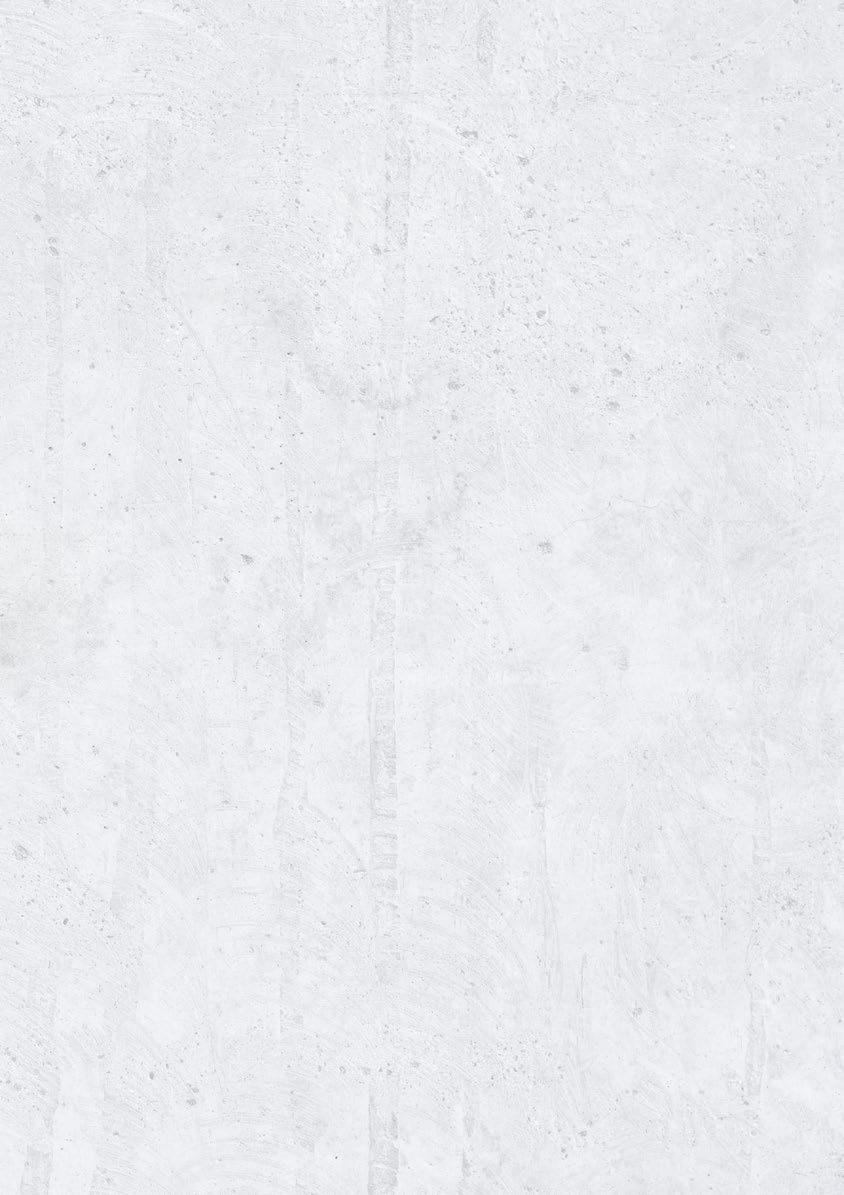
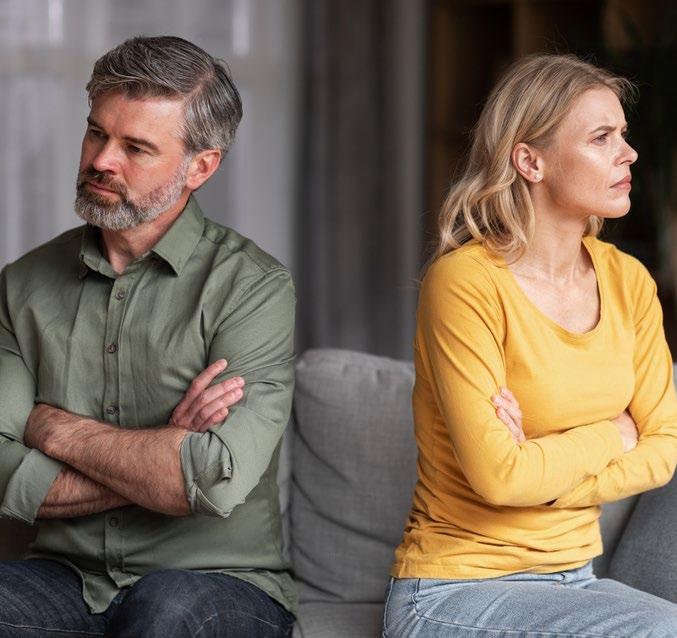
Working through the emotional and practical aspects of separating is one of life’s greatest
challenges. If you can navigate it with the correct information, kindness, and respect for one another, you’ll look back on this life’s chapter and milestone with pride.
Siobhan Mullins, author of The Guys’ Guide to Separation and Divorce, is an award winning, collaboratively trained family lawyer and founder of Separate Together, a family law firm best known for making the complexity and anxiety of separating simple and easy.
For more information, visit separatetogether.com.au
Guide Dogs Australia has revealed Coles’ “top dogs” with Coles Mackay in Queensland taking out the honour of having the top fundraising coin Collection Dog in the country.
The much loved and iconic Collection Dog at Coles might not bark or move but it’s been changing lives one coin at a time with the help of shoppers by raising over $800,000 nationally for Guide Dogs Australia last financial year.
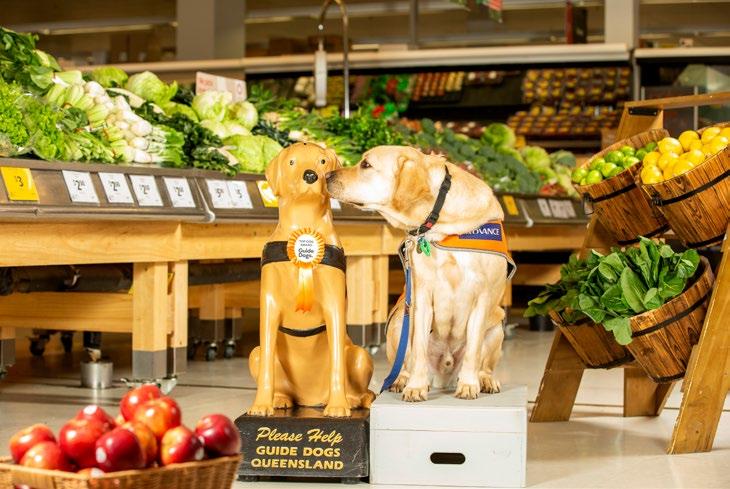
Every coin dropped into one of the beloved in-store Collection Dogs helps Guide Dogs assist someone with low vision, blindness or specialised support needs live a life without limits.
While dogs are what they’re best known for, the charitable organisation also provides a range of services including Adult and Children’s Mobility, Early Childhood Services, Assistive Technology, Occupational Therapy, Access Consulting, Advocacy, Therapy Dogs and more.
Coles’ Top Dogs were awarded with their very own rosette worthy of any best in show and visits from Ambassador Dogs and puppies in training to thank customers and team members.
Guide Dog Mobility Instructor Ryan Jones thanked Coles and its team members and customers for their support.
“We’re incredibly grateful that our coin Collection Dogs have found a loving home at Coles. It’s been an amazing journey since we introduced the first Collection Dog at Coles 40 years ago to today having raised more than $12 million from over 900 dogs across Australia,” he said.
“It’s also a truly special feeling to know that people who have been putting a gold coin in the Collection Dogs since the very beginning have now passed on that tradition to their children and grandchildren. I have done the same with my own little one!”
Guide Dogs Client Liz Wheeler said money raised by shoppers is helping her to live a life without limits with the support of Guide Dog Poppi. “Poppi has made the ordinary for me not only possible, but extraordinary,” she said.
“Nine years ago I lost my vision, my job and the ability to do ordinary things like cross roads or cook. I lost all hope, but then Guide Dogs gave me Poppi.”
“It was hard to be scared to leave my front door when Poppi was so excited to go. With Poppi by my side, I achieved my goal of completing my studies - she graduated along with me and was even presented with her own honorary award!”
Coles General Manager Corporate & Indigenous Affairs Sally Fielke said Coles was proud of its long- standing partnership with Guide Dogs Australia.“Coles is extremely proud to have raised over $1 million for Guide Dogs Australia last financial year from Collection Dogs in our stores and the sales of specially marked reusable shopping bags.”
“We couldn’t have achieved this milestone without the generosity of our customers who have kept our Collection Dogs well fed and we can’t thank them enough for their ongoing support.
Every dollar raised can help to make a huge difference to the life of someone living with low vision, blindness or specialised support needs.”
Coles has proudly been involved with Guide Dogs since the late 1930s when Lady Margaret Coles became interested in establishing a Guide Dogs Service in Australia. Lady Coles was an animal lover who dedicated her life to helping improve the bond between humans and animals.
Today, the partnership between Coles and Guide Dogs Australia has expanded to include hosting hundreds of the iconic Collection Dogs, selling reusable community bags to raise funds, and customer accessibility initiatives.
“It’s also a truly special feeling to know that people who have been putting a gold coin in the Collection Dogs since the very beginning have now passed on that tradition to their children and grandchildren. I have done the same with my own little one!”
I’m not your go-to guy when it comes to small-scale spending hacks. In my mind, trying to save 50 cents here and there isn’t worth the time or effort it takes, and it also shifts your focus from abundance to scarcity. I think you would be much better off if you concentrated on saving dollars off your larger spends, rather than cents off your smaller ones. Also, be reasonable. I don’t think sacrificing to the point of regressing to one-ply toilet paper makes any sense. That is, you don’t want to cut back on everything because it will become unmotivating and difficult trying to stick to the financial equivalent of a diet of lettuce leaves. That said, here are a few suggestions for saving on some big-ticket spends. The tips are all based on avoiding paying a ‘lazy tax’, which is money you voluntarily pay when you forget to negotiate a better deal.
Engage the services of a mortgage broker to see if they can find a lower interest rate loan. If they can, ask your current lender to match it, and if they won’t, move your business. Even if you only negotiate a small discount, on a big loan, over a long time, the savings will be significant.

Make it a rule to price shop your power at least once a year. Power providers are always dangling incentives and lower prices to get new sign-ups, and then hope you prefer the convenience of sticking with them rather than shopping round.
As for energy providers, price shop your home and car insurance annually to see if you can get a better deal. Before changing, ask your current provider to price match, and if they can’t or won’t, then move.
The rule is to pay for what you use, not what you don’t. Paying for data and speeds that you rarely use but want ‘just in case’ is flushing cash down the ‘toilie’. If you require more data or more speed for a special occasion, you can usually buy the extra needed by the block.
Finally, name and number your vices and make the call on whether the cost is worth the benefit. It might not be an all-or-nothing decision, but rather a less-is-more mindset. Here’s a few on the vice list to consider with the average weekly spend in after-tax dollars next to it (Wallis, 2021), which I have recalculated back to before-tax dollars, assuming a tax rate of 30 per cent.
Keep one paid TV subscription at a time, for two months at a time. Binge watch the shows you like, then cancel and move on to the next TV subscription. You’ll get through six providers in 12 months, watch all the good shows, but effectively only pay for one membership.
For instance, if your marginal tax rate is 30 per cent, then $10,816 in after-tax dollars requires $15,452 in pre-tax dollars. If your spending isn’t under control, then it’s out of control, and that’s a problem because runaway spending repels money. To fix the problem, you need to learn and implement spending control.
This is an edited extract from Steve McKnight’s Money Magnet: How to Attract and Keep a Fortune that Counts (Wiley $32.95), available now at all leading retailers.

I don’t think sacrificing to the point of regressing to one-ply toilet paper makes any sense.
With the start of the school year just around the corner, optometrists are calling for parents to schedule an eye test for their children with concerns over digital eye strain. It’s important that children get a full eye test when they reach school age, even if their vision seems fine, to ensure any potential issues are identified so they can be corrected and managed.
With children spending more time on screens than ever, there is potential to develop digital eye strain, something optometrists are seeing much more often. Children are also more at risk of developing myopia or becoming shortsighted as their eyes are still developing.
“I generally recommend parents take their child for a routine eye test before they begin school and then every two years after that unless otherwise directed by their optometrist.”
If a child complains about headaches, blurred vision or any issues with their eyes, I recommend booking an appointment with an optometrist straight away rather than waiting until their next check-up. The changes we’re seeing in virtual and screen-based learning means children and teens alike are spending more time on their laptops and tablets, so it’s important your child’s vision stays front of mind this school year.”
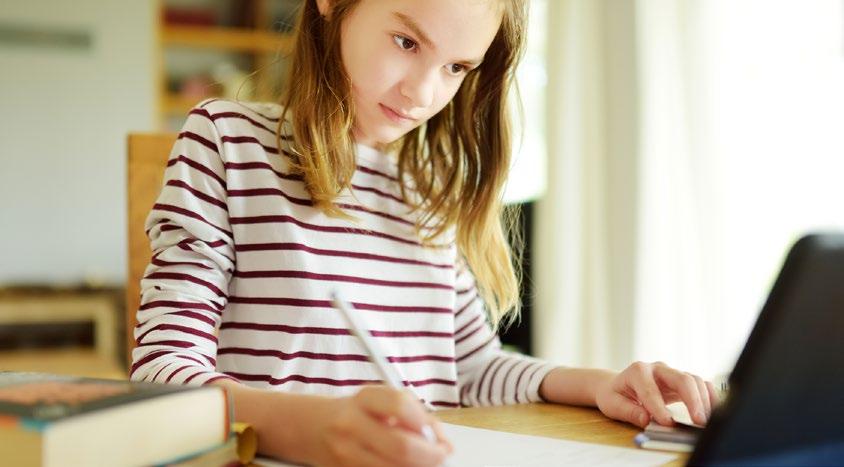
1. Remind your child to blink. This keeps the surface of your eyes from drying out.
2. Keep a bottle of water on them at all times. Your eyes dry out when you’re dehydrated so making sure your child is drinking plenty of water throughout the day is important!
3. Follow the 20-20-20 rule. This means, every 20 minutes remind your child to shift their eyes to look at an object at least 20 metres away, for at least 20 seconds. The easiest way to do this is to take small ‘window’ breaks and look out at a faraway object to give their eyes a break from their screen.
4. Spend time away from the screen. Make sure that during the school week, your children spend time playing outside or stepping away from the screen to do another activity. Staring at screens and being indoors for extended periods of time can increase the risk of myopia or becoming short-sighted. This means the eyes focus well only on close objects, while more distant objects appear blurred.
ByGreeshma Patel, optometrist for Specsavers.

The instax mini 11 instant camera may be delightfully small but it’s full of big, bubbly and bright personality. Its super simple operation, dedicated selfie mode and automatic exposure means you are ready to capture any photo-worthy moment. Available for a limited time, the Stax of Fun Instant Photo Kit is oh-so-giftable and is the perfect starter kit, containing everything the budding instant photographer or selfie-lover of all ages needs. Kit contains: 1 x mini 11 instant camera, 1 x themed mini film (10 pack), 1 x mini 11 camera case, 10 x photo frames and pegs, 1 x novelty camera strap & 1 x bag tag.
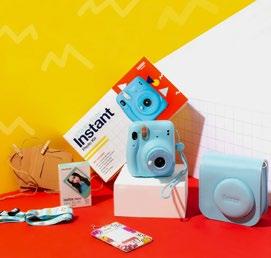
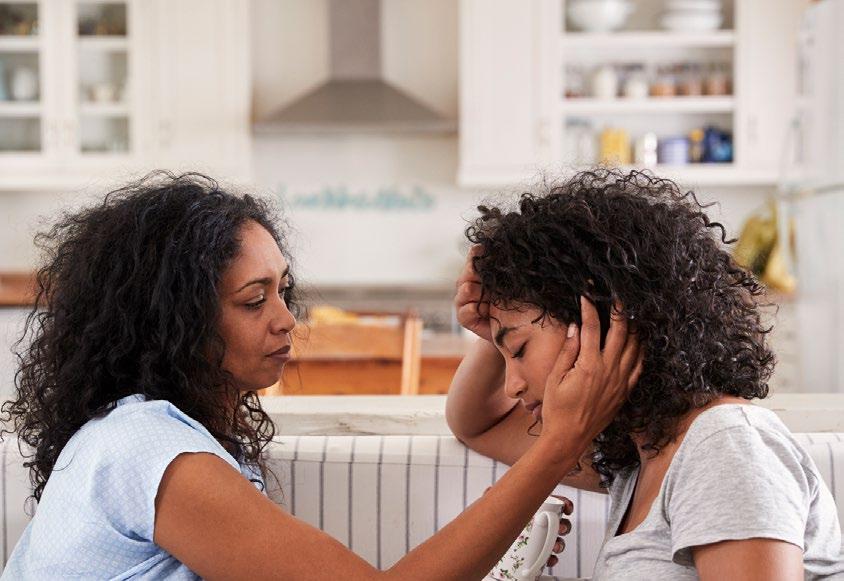
As a child and adolescent Psychiatrist, self-harm is sadly something that I frequently encounter and it can be very distressing - not only for parents and friends, but also for the young person, facing an extremely confronting and confusing experience. While self-harm has been glamorised by a number of programs including the popular ‘13 Reasons Why’, it is a topic many teenagers find difficult to express with others, particularly parents. Self-harm is frequently conflated with suicide or a suicide attempt. Although, at times a self-harm incident may be an attempt to end one’s life, more often than not, acts of self harm have alternative motivations and underpinnings. Self-harm is described as any intentional action to inflict pain on one’s own body and commonly includes such methods as cutting or burning the skin, overdosing on medication or ingesting toxic substances.
Our behaviours are simply another form of communication and acts of self-harm can be viewed as an expression of emotions that cannot otherwise be expressed or experienced. Self-harm is also used as a form of self-punishment, particularly if someone believes they are a ‘bad’ person, ‘deserving of harm’. It is reported that self-harm can relieve extreme emotions of distress or tension within an individual, or feelings of numbness and emptiness and allow the individual to become grounded back in reality. Self-harm can be perceived as a cry for help as victims attempt to quieten their intrusive or distressing thoughts.
Self-harm is commonly found in victims of trauma, who use internalisation and suppression of emotion or dissociation as defences to survive reliving their experience. Teens who self-harm may have difficulty regulating their very intense and overwhelming emotions, particularly if their surrounding environment is invalidating their distress or where they feel shame for their needs and perceive themselves as burdensome when asking for help.
Self harm can serve to validate someone’s emotional pain, as the physical hurt seems like a more acceptable reason for their anguish. It is important to see self-harm as a form of communication, albeit a selfdestructive act that unfortunately, tends to distance others rather than bring them closer.
In teens self-harm acts are often impulsive and although their intention may not be to die (rather to relieve pain), it can prove fatal. The causes of distress and emotional pain for teenagers vary greatly and relate to social challenges, bullying, identity confusion, depression, conflict in the home, low self-
tolerate intense emotions. Emotions, like waves, tend to ebb and flow and hence the goal is to get through, rather than to rid the emotion. This process will result in growth, greater coping skills and resilience. There are some researchers who advocate for less painful alternate acts such as flicking an elastic band around one’s wrist, chewing ice or putting wasabi on the tongue.
If a young person is self-harming, therapies such as cognitive behaviour therapy (CBT) and dialectical behaviour therapy (DBT) can be more helpful and conducive. Medication has its place and should be used to treat any
esteem and feelings of failure. The teenager's inability to have greater life perspective may limit their ability to see alternate solutions to their problems. Teenagers often assume that their parents or other adults don’t understand or would be disappointed if they knew of their struggles.
Management of self-harm requires an understanding and validating environment. This includes making the young person feel safe and comfortable enough to express their emotions. They should not feel judged, but rather supported with their distress. Techniques such as distraction and self soothing can help with learning how to
severe depression or anxiety (or other mental health disorders). Having clear safety plans at school and home are critical and the teenager should be encouraged to vocalise their feeling of being unsafe and taken seriously when doing so, including attending a local hospital emergency department or encouraged to make a call to another emergency service like Kids Helpline and Lifeline. All of these will help to keep the teenager safe, until their feelings subside and the underlying issues are addressed and ultimately, resolved.
By Dr Lisa of When the Light Goes Out)Myers (Child Adolescent Psychiatrist and Author
Our behaviours are simply another form of communication and acts of self-harm can be viewed as an expression of emotions that cannot otherwise be expressed or experienced.
Carrying babies in a soft fabric sling or carrier close to their parent or caregiver has been practised throughout the world for centuries. However, a recent inquest into the death of a three-week old baby boy in New South Wales has highlighted the potential risks of this valued aspect of infant care.
At least five babies across three Australian states have died during use of an infant sling or baby carrier since 2004. Case reports from Australia, France, Japan and the United States have also highlighted the risk of injuries and deaths associated with slings and carriers. Although rare, these tragic deaths may have been preventable. There are protective strategies parents and caregivers can use to reduce the risk of accidents and fatalities.
Baby slings and carriers allow parents to “wear” their baby. First used in traditional societies, baby-wearing has increased in western societies in recent decades. As with almost all infant care practices, there are benefits and risks.
Baby-wearing is convenient, helps to soothe and calm baby, and allows parents to pick up on infant feeding cues. It has been associated
with improved maternal-infant bonding, increased breastfeeding duration and better infant neck muscle development. However, adverse outcomes from incorrect use include hip dysplasia, falls, burns and suffocation.
Commonly used but not wellunderstood
In Australia, baby-wearing is very common. A study conducted in Queensland with over 3,300 parents with babies aged 3–4 months, found 87% of parents had used a sling or baby carrier in the first three months of their baby’s life. Over one third had used a sling or carrier for baby to sleep in.
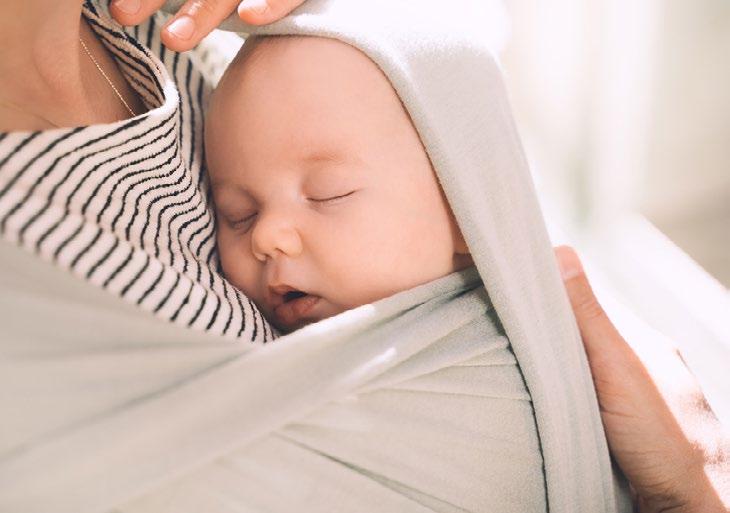
But while 65% of parents said they had read about how to use slings, less than one in five had heard of internationally agreed upon sling safety advice, known as the TICKS rules.
A variety of designs were being used by those studied, including front fabric wrap or structured baby carrier styles, over the shoulder styles, ring slings, and traditional slings. Several of these styles are not recommended for babies under four months.
These findings highlighted that many parents may not be aware of potential dangers from use of infant products that do not match their baby’s growth and development.
Suffocation is the likely cause in most deaths associated with slings and baby carriers. To understand the risks, we need to understand babies’ bodies and how they usually develop.
In particular, we need to know how babies breathe and how the environment they are in can make breathing difficult. Typically, this interaction is dynamic – it changes as a baby grows and develops.
The TICKS checklist extends the idea of the airway as a tube that needs protecting. It is applicable to various circumstances such as infant car seats, bouncers and rockers, as well as slings and baby carriers. The five points promote safe baby-wearing by emphasising caregiver observation and optimal infant positioning to reduce suffocation risk. The baby should be positioned in a way that is
• tight (firm enough to position baby high and upright with head support)
• in view at all times
• close enough to kiss
• keeps their chin off chest
• supports their back.
Product Safety Australia, Raising Children’s Network, and Red Nose have also published advice for parents who are considering slings or carriers for their baby.
It’s important to note babies can have difficulty with breathing without making any noise or movement.
Currently there are no Australian standards for the manufacture of baby carriers and slings, despite slings developed in other countries being available for purchase in Australia.
Compared to older children, babies have smaller and more easily compressed airways. And they have a large, heavy head relative to their body size, with a protruding occiput (that bony bump on the back of their head) that tips the head forward even when lying on their back.
Babies prefer to breathe through their noses. They have less respiratory stamina (their ability to respond to reduced oxygen) and less ability to control their temperature, particularly if their head is covered.
The anatomy and physiology of babies younger than 12 months means they are vulnerable to suffocation in several specific ways.
Ways a baby’s airway can be at risk
We need to think about the baby’s airway as a tube. It needs to remain open for oxygen to get to the lungs. Everyone who cares for young babies needs to be aware this tube may be 1. Covered, 2. Pinched off, 3. Bent or 4. Pressed on. Any of these actions increase the risk of suffocation.
Raising public awareness about safety and the TICKS checklist, together with recommendations for selecting and using slings and carriers appropriate for baby’s age and development, will help parents harness the benefits of using slings and carriers to keep their babies close and safe.
Babies under four months of age often lack the strength to move their heads to keep their airways clear. So if baby’s face is covered or pinched off by fabric or the wearer’s body, rapid suffocation can occur.
If baby is lying with a curved back in a C-position – such as in a baby capsule, sling or carrier – and the head is able to tip forward to chin-on-chest, their airway may bend. This too can result in reduced
oxygen and slow suffocation.
Finally, if there is pressure on baby’s chest, such as when a carrier or sling is too tight around baby’s body, the infant might not be able to expand their chest to take deep enough breaths.
Babies born preterm, of low birth weight or those who are unwell need extra consideration and support to maintain a clear airway, compared to full term babies.
By Jeanine Young, Professor of Nursing & Deputy Head of School - Research, University of the Sunshine Coast. Jeanine Young is affiliated with the Queensland Child Death Review Board and the author of the Red Nose Information Statement: Slings, Baby Carriers and Backpacks. This article is republished from The Conversation under a Creative Commons license. Read the original article.
